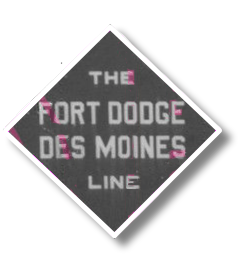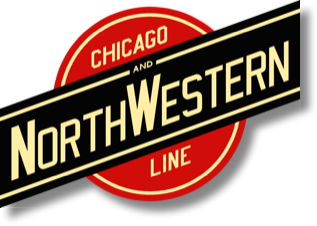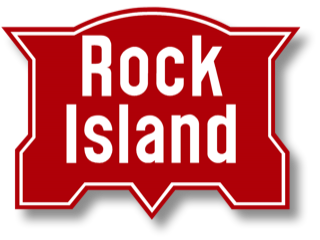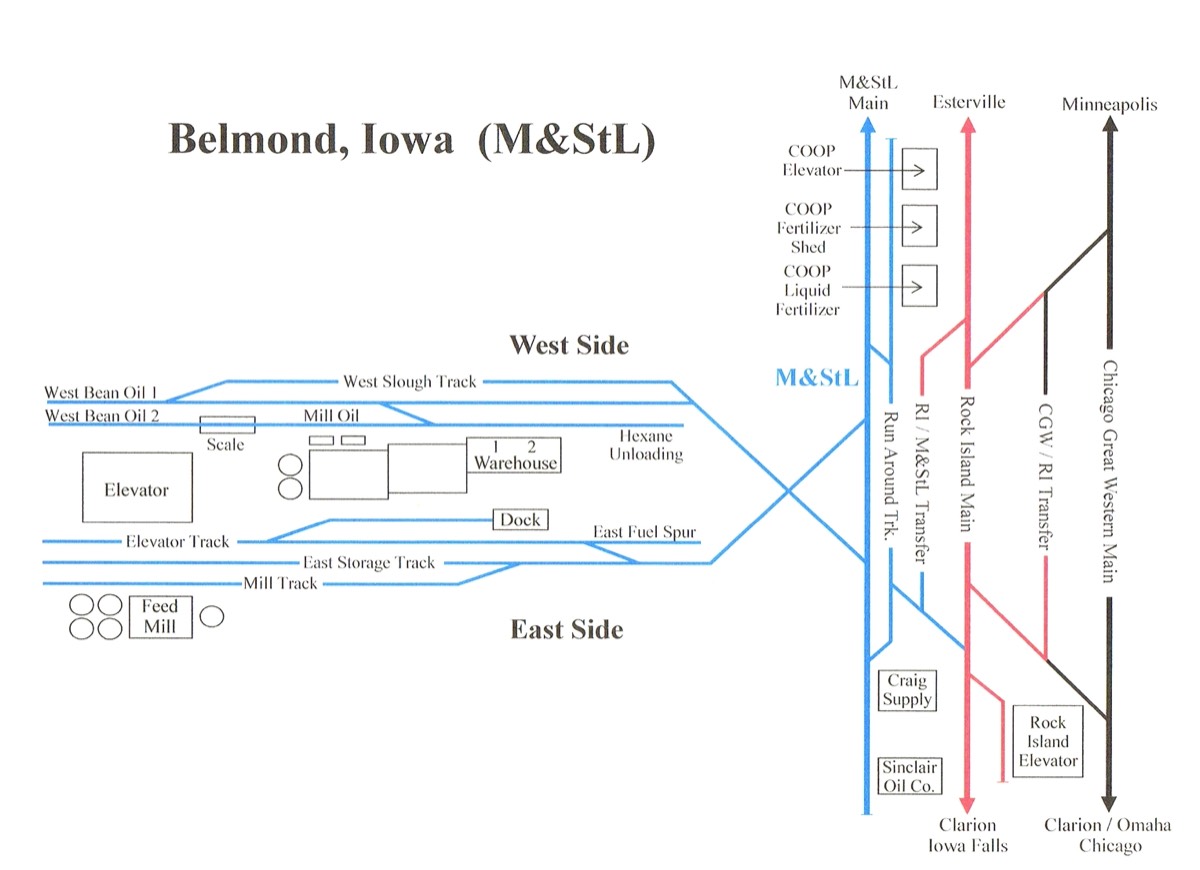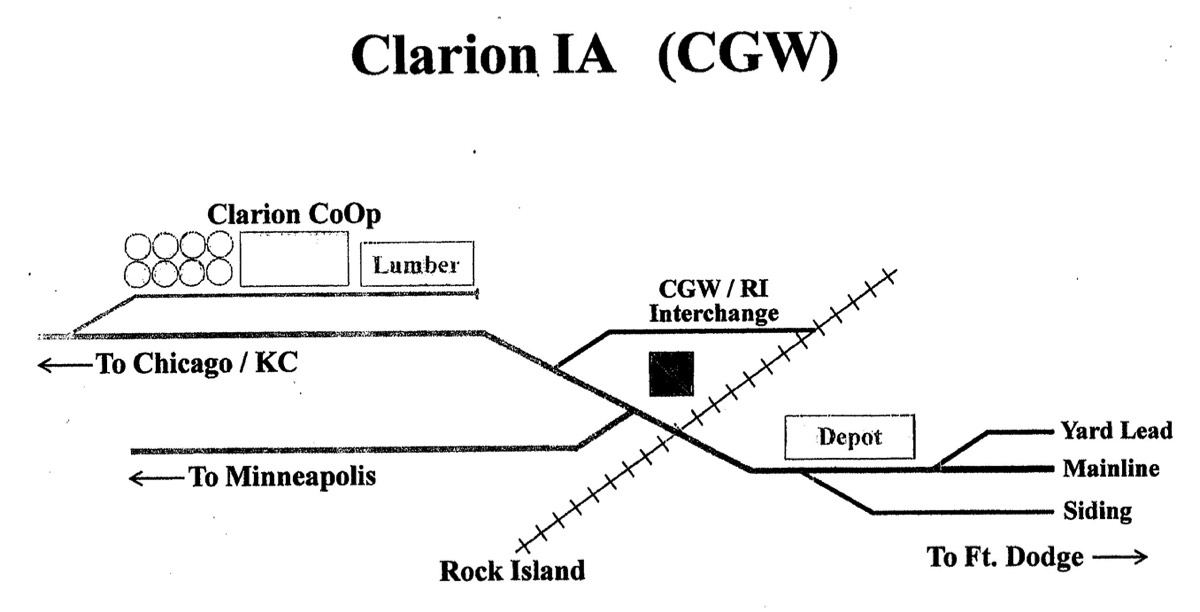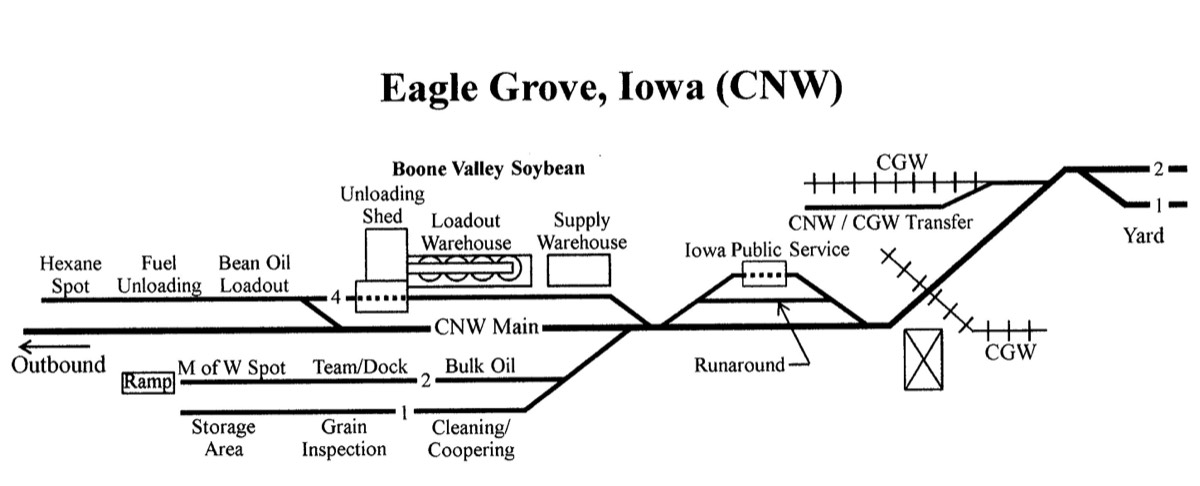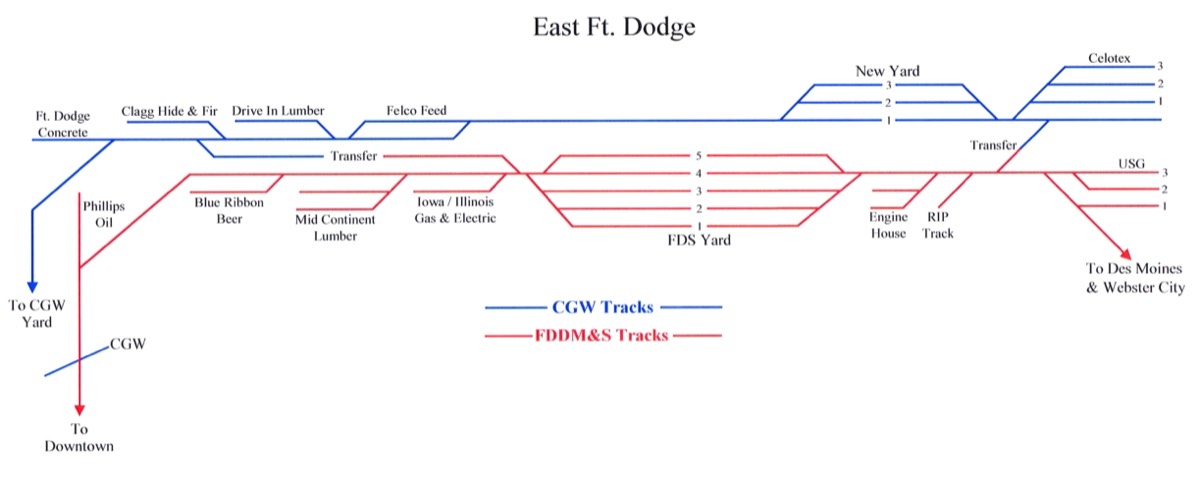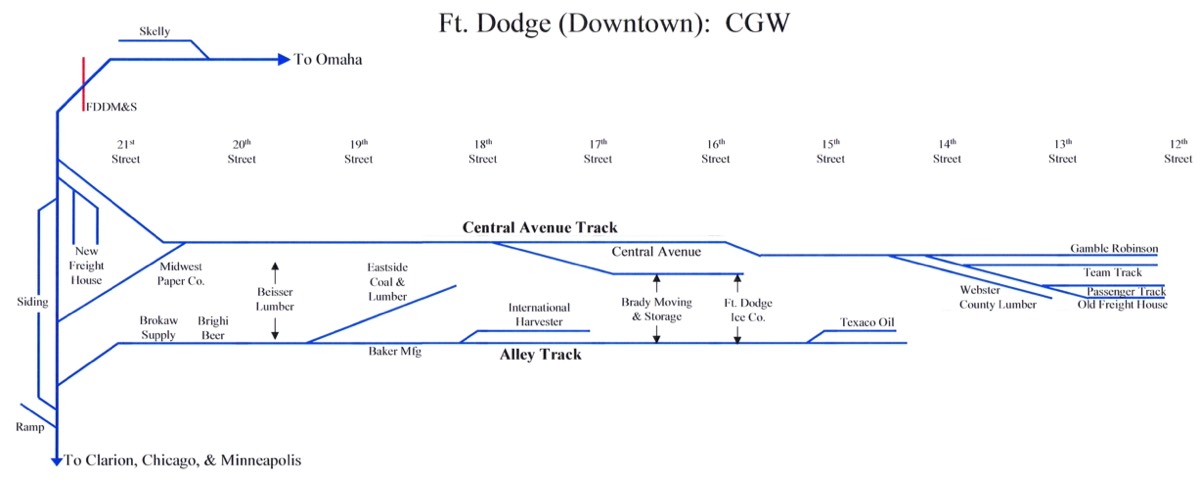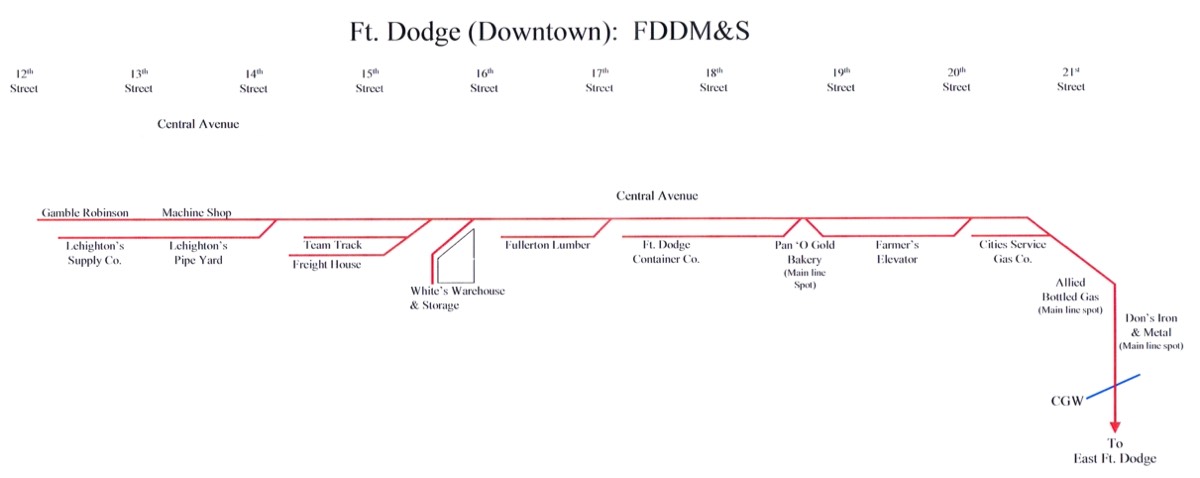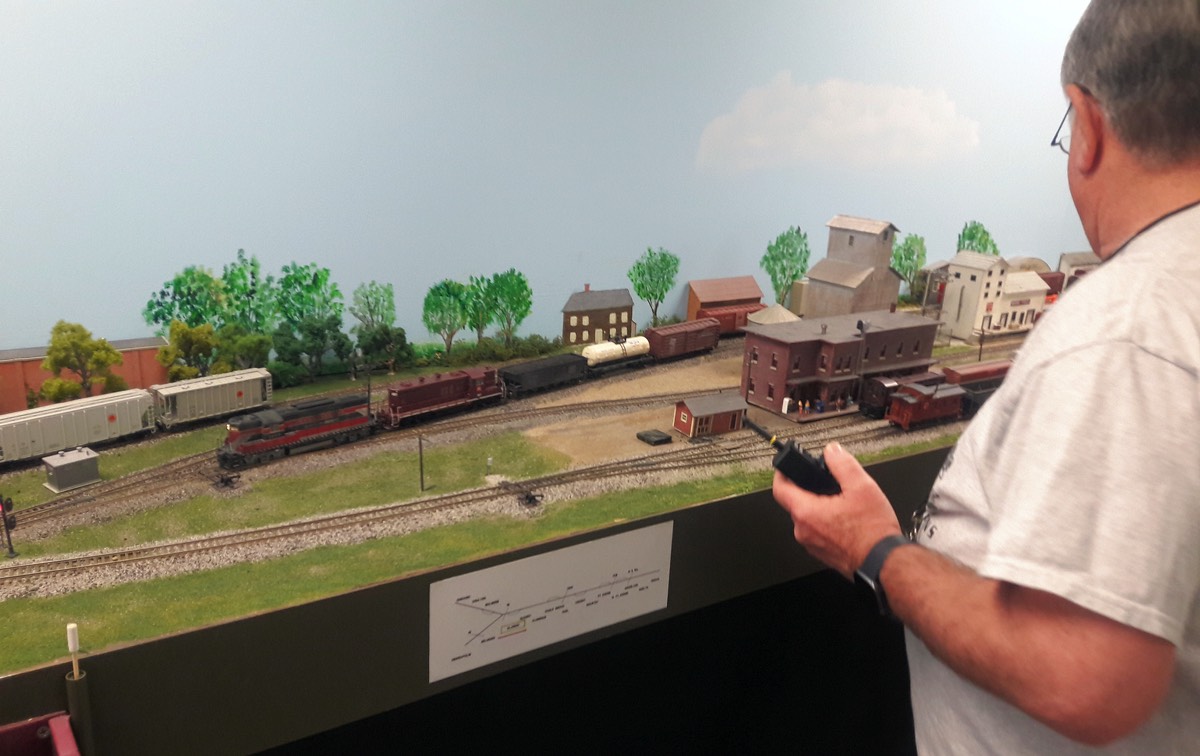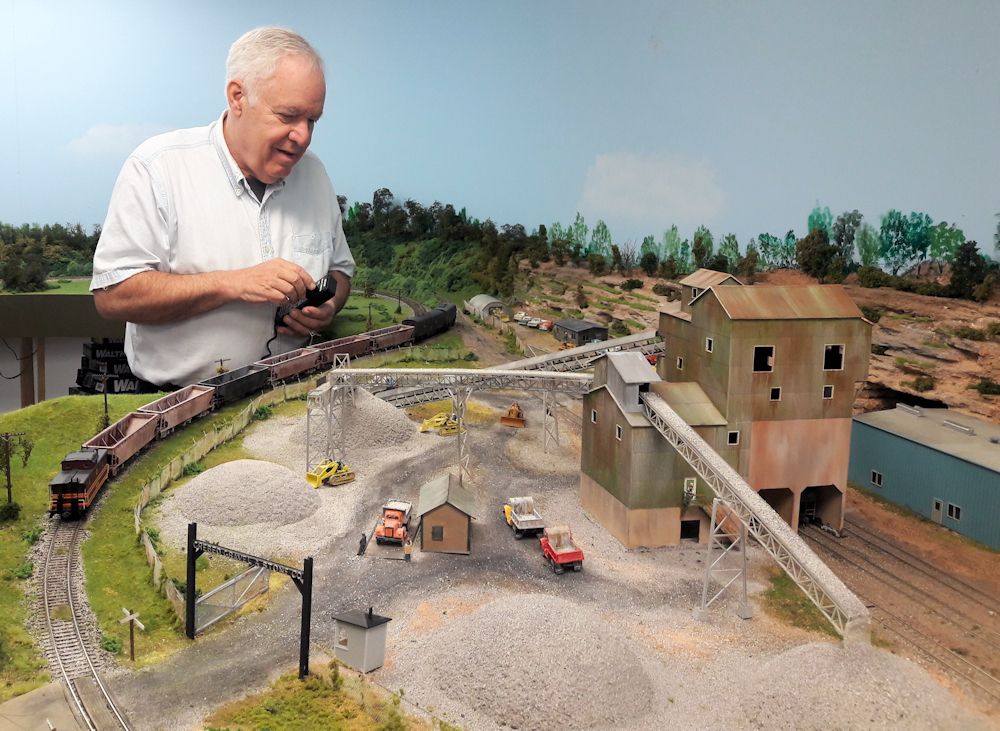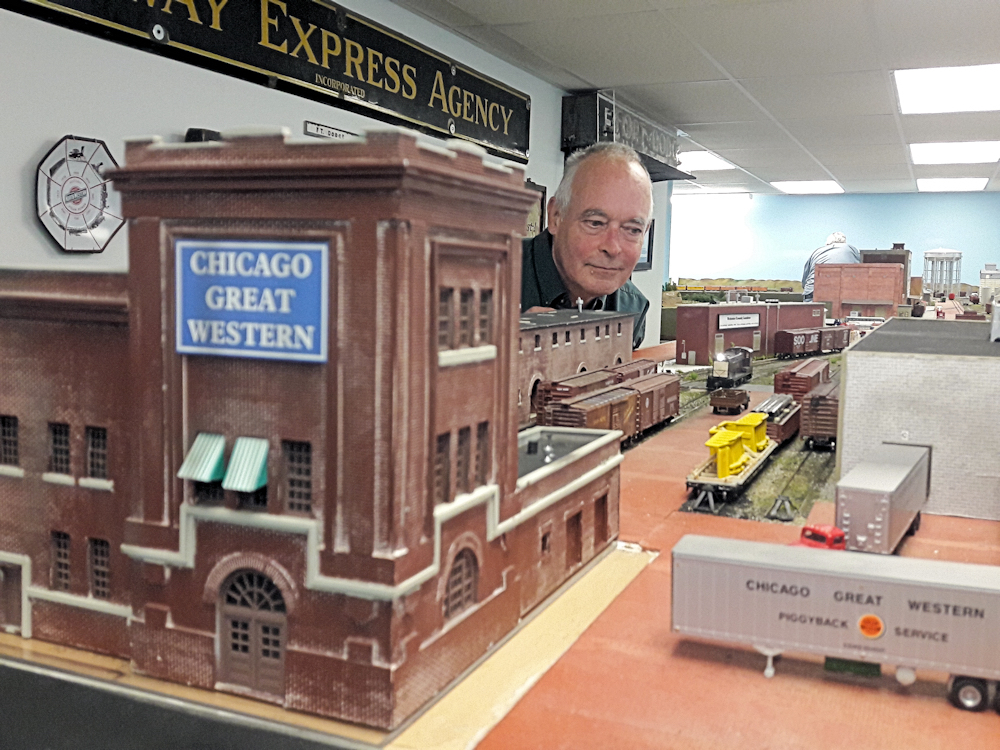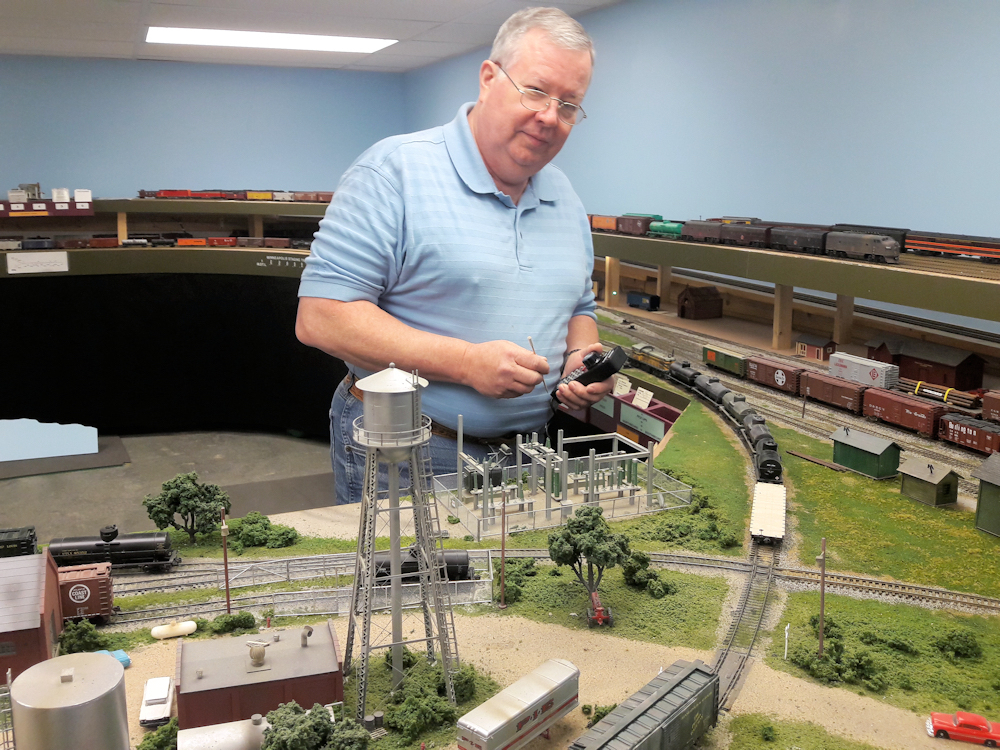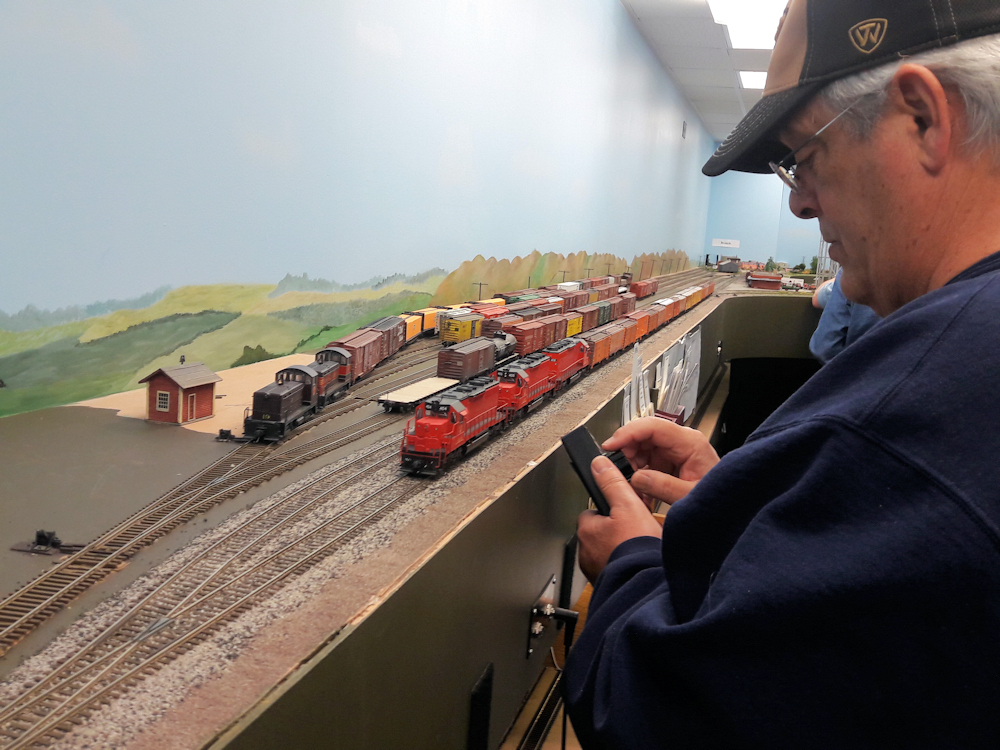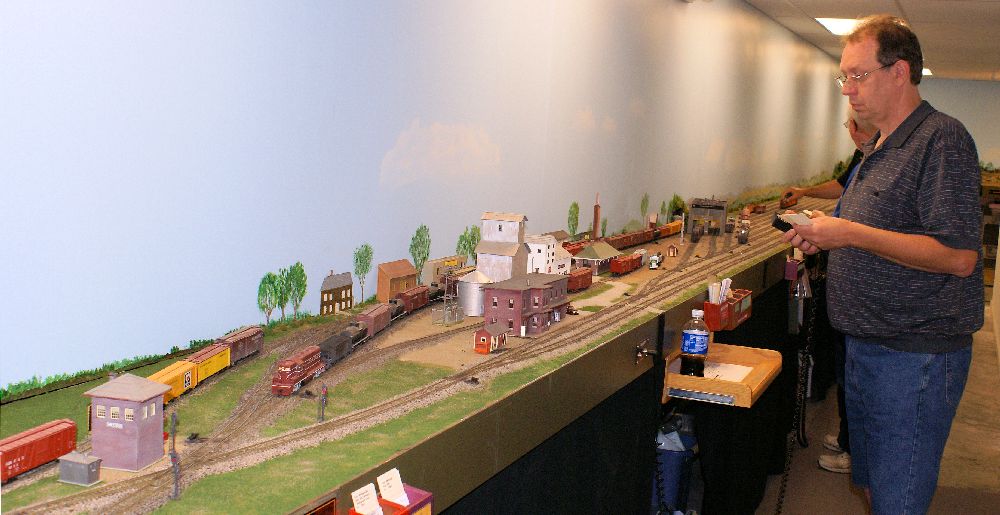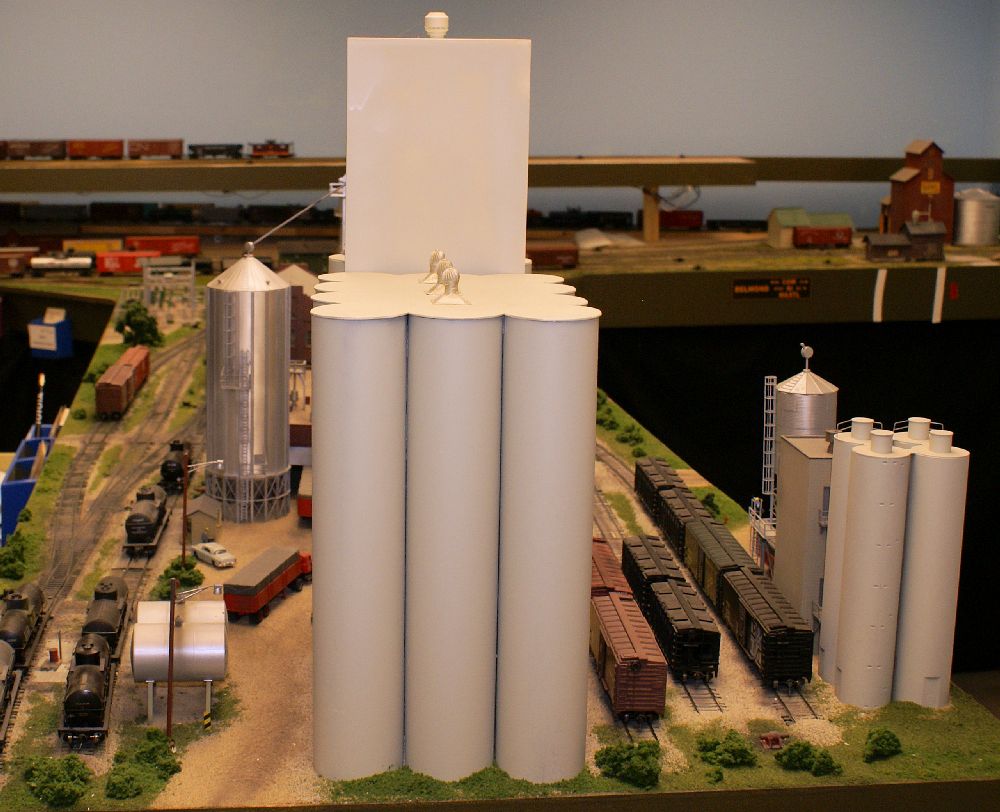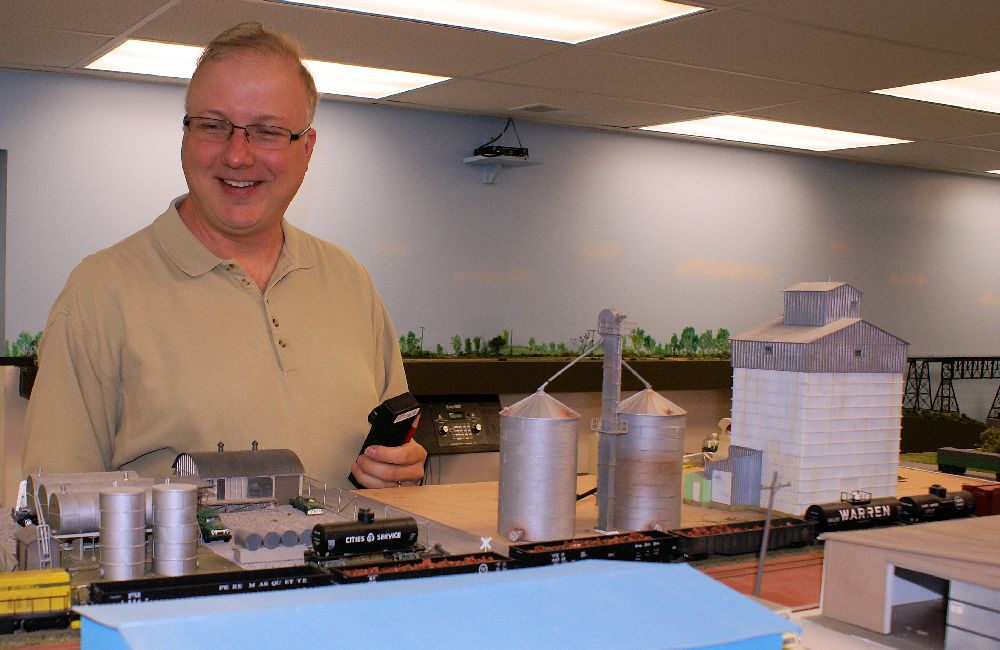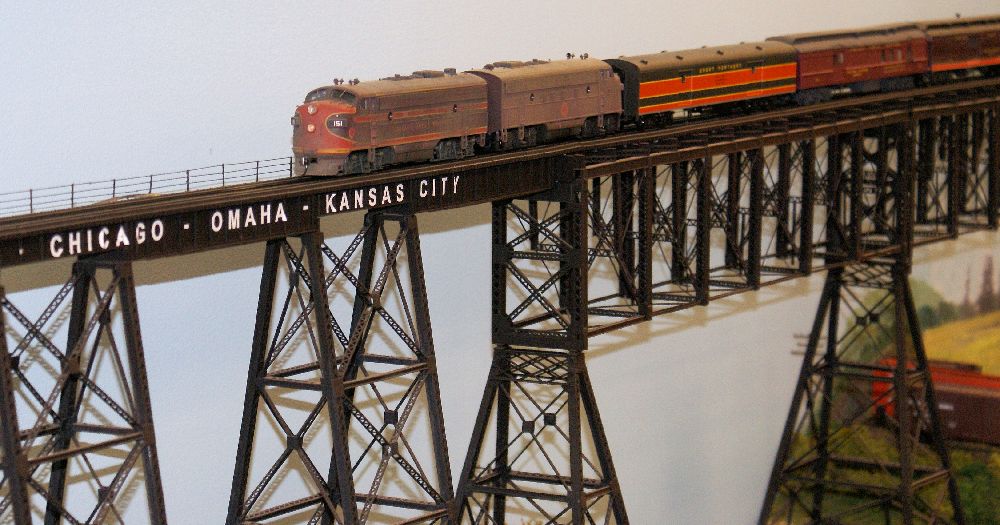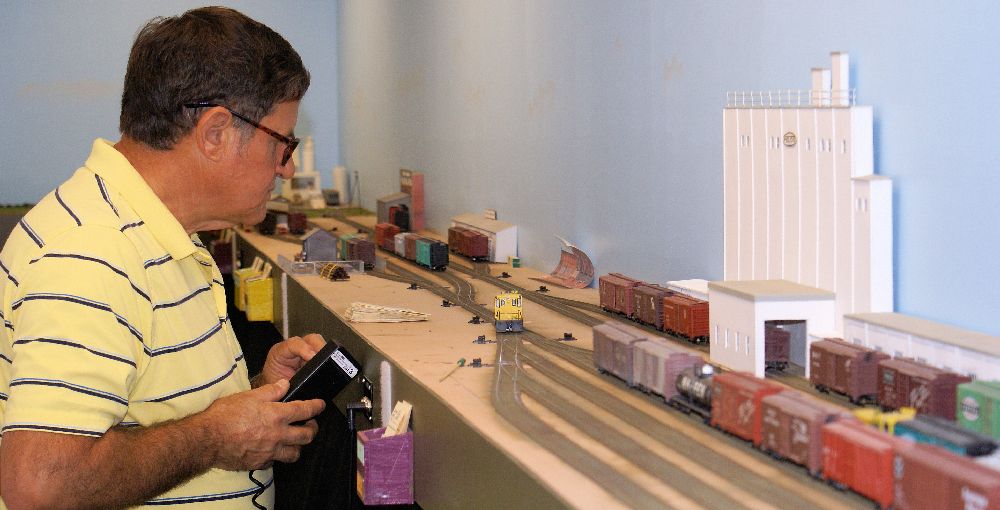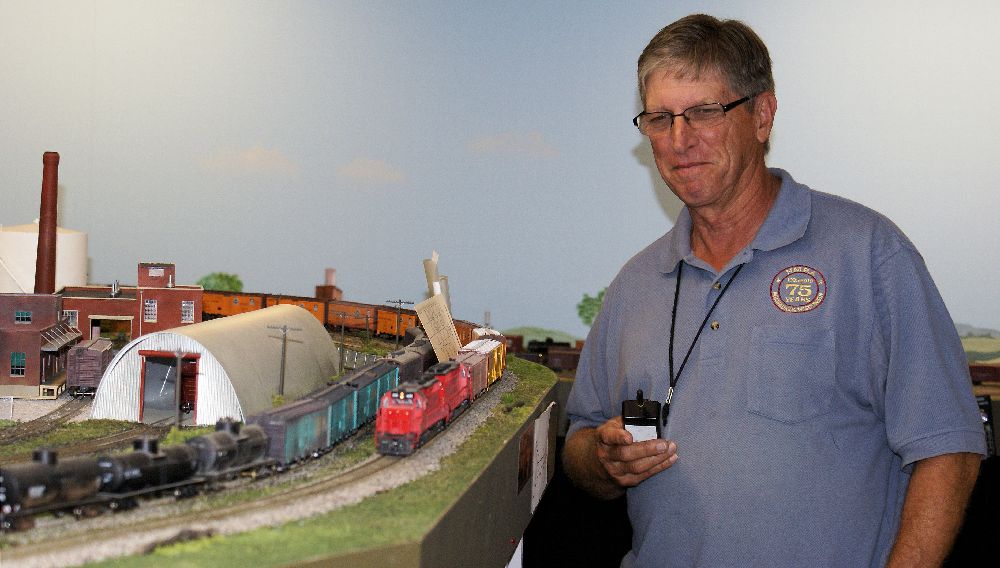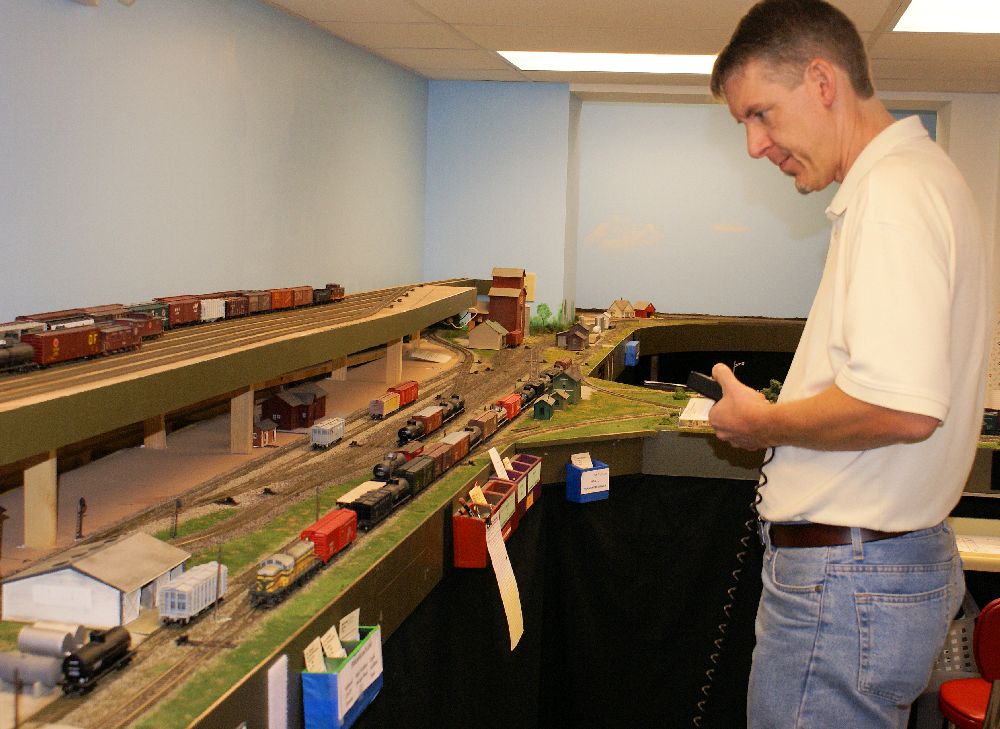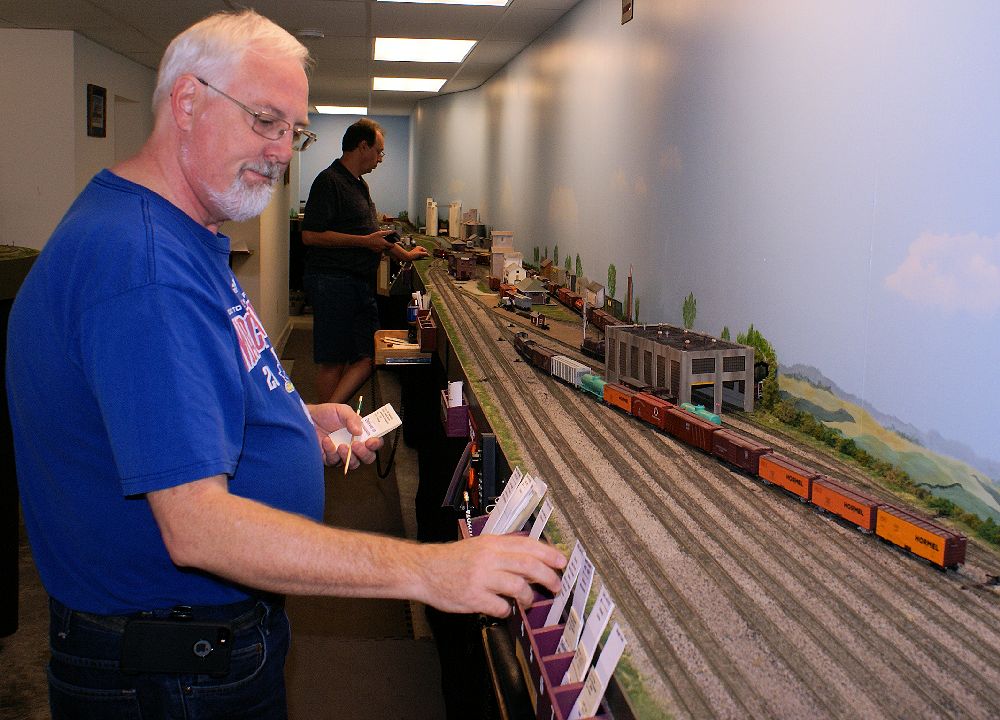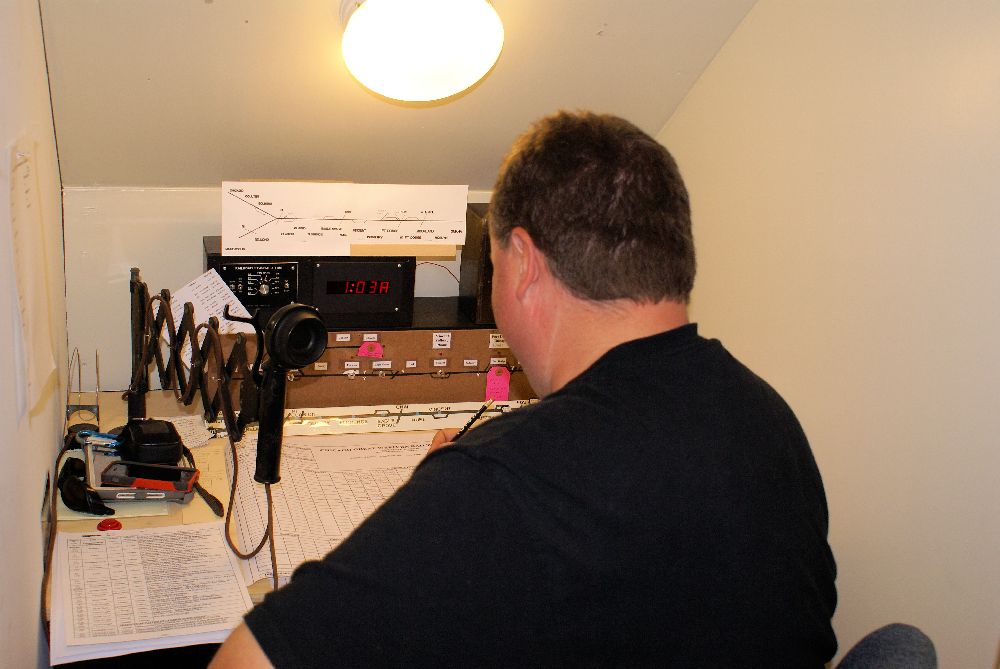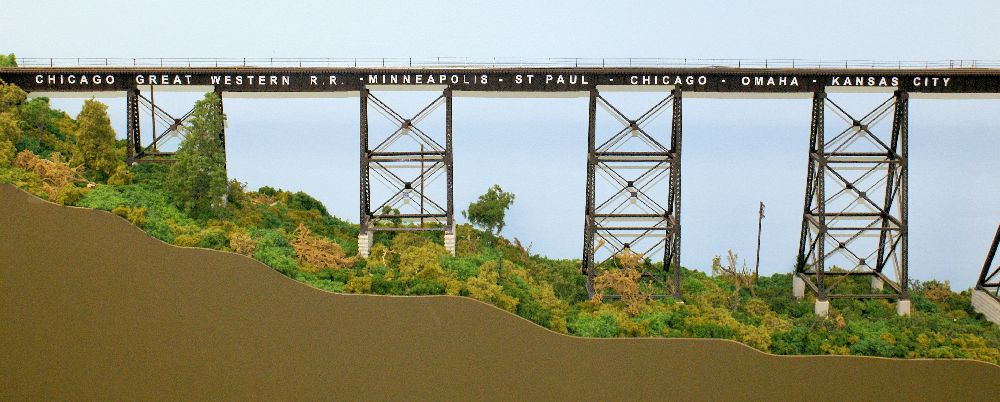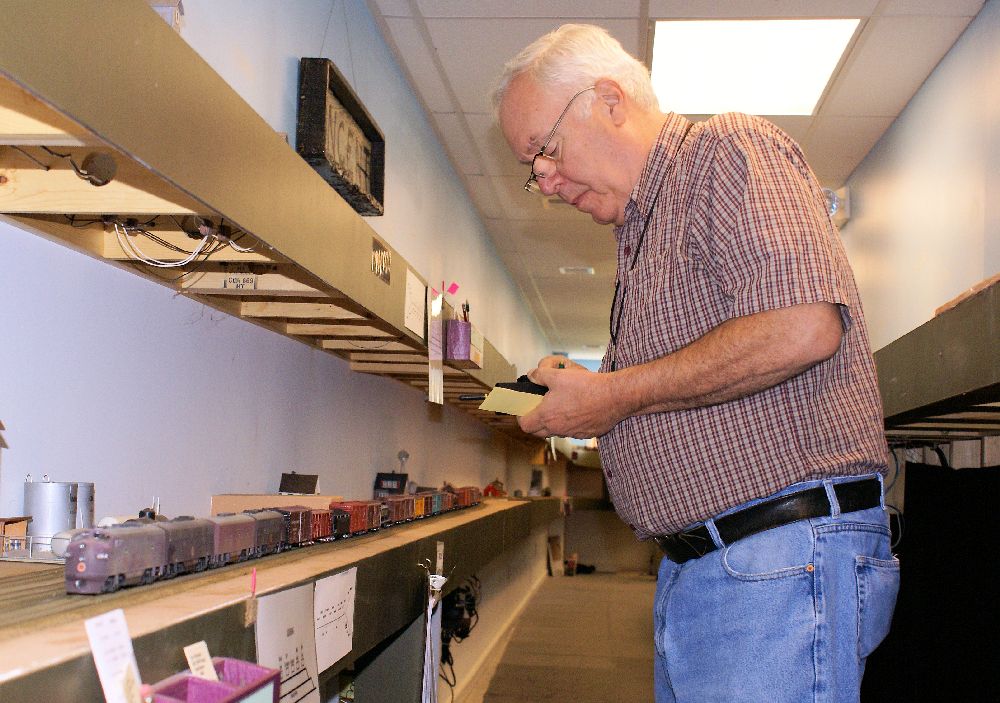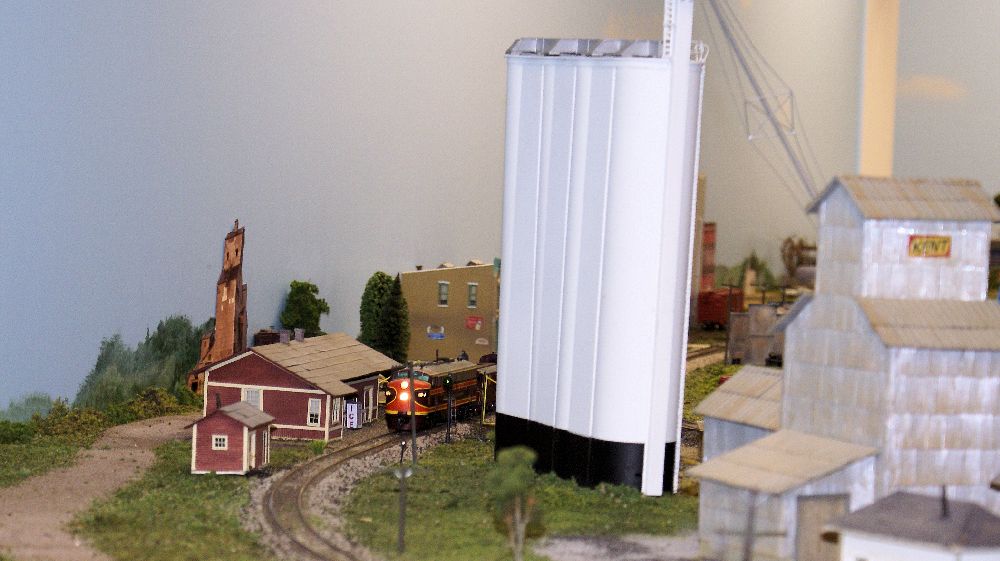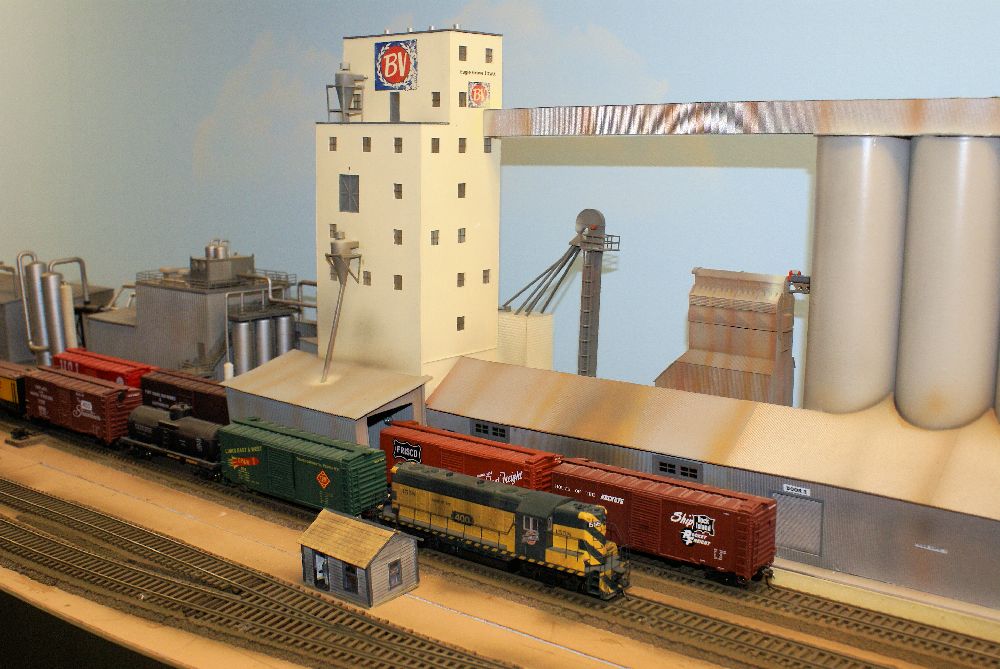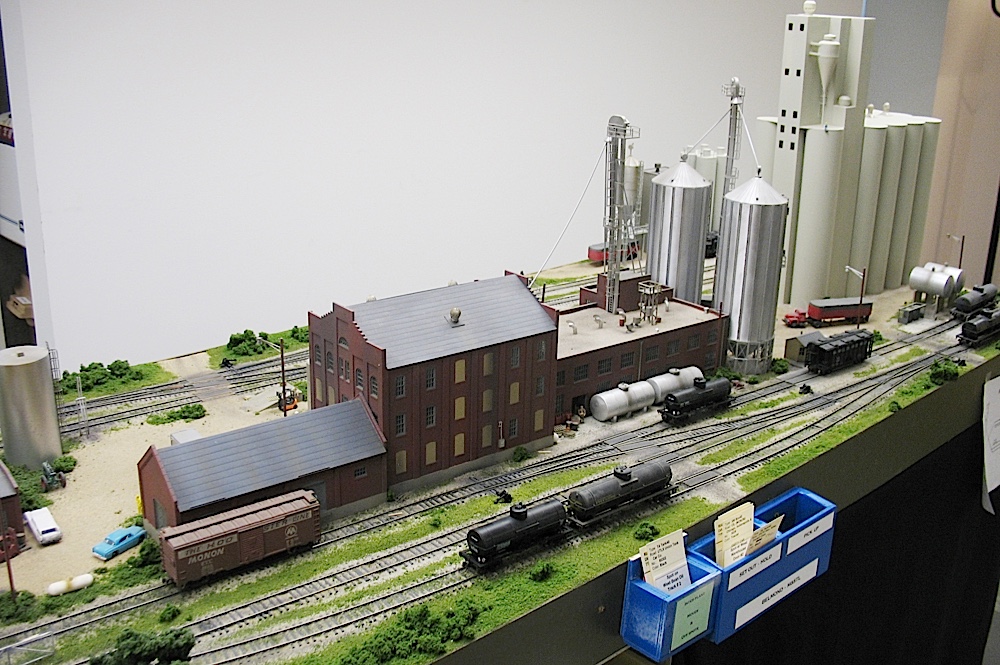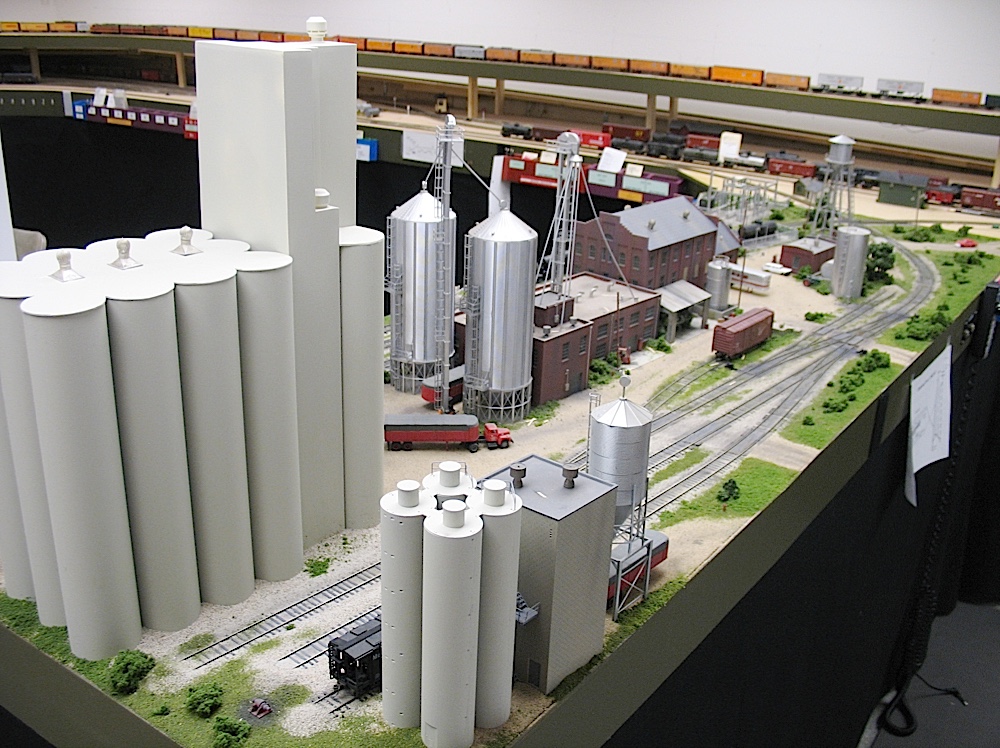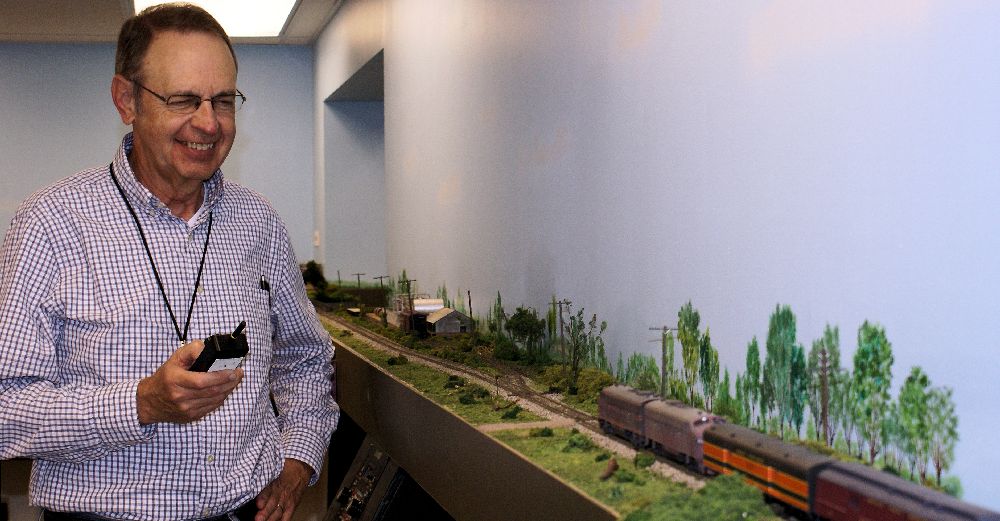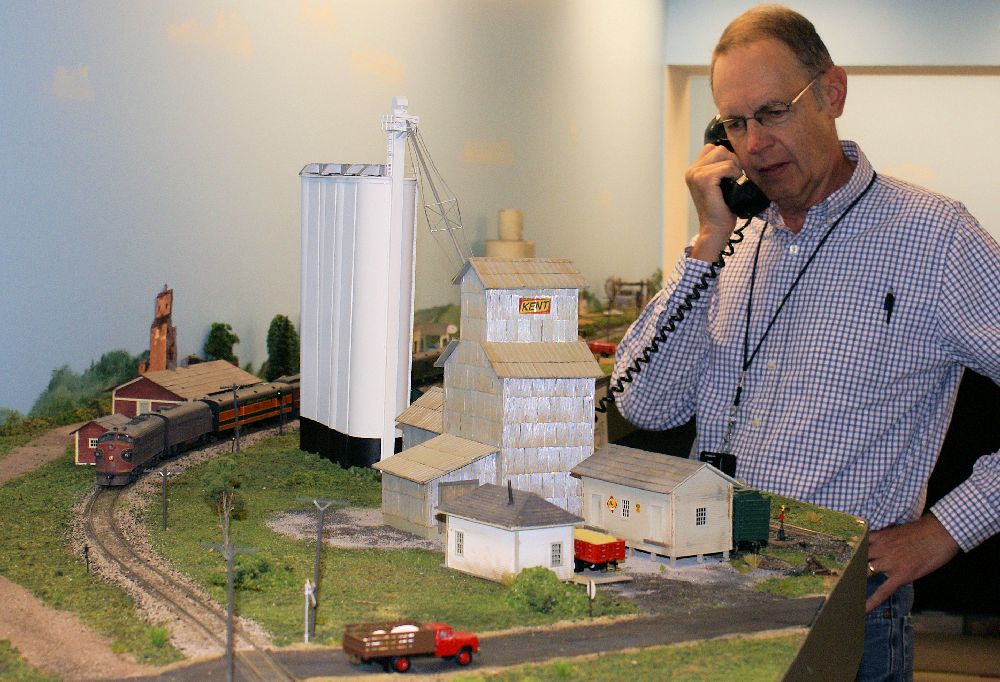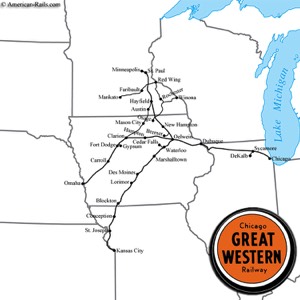
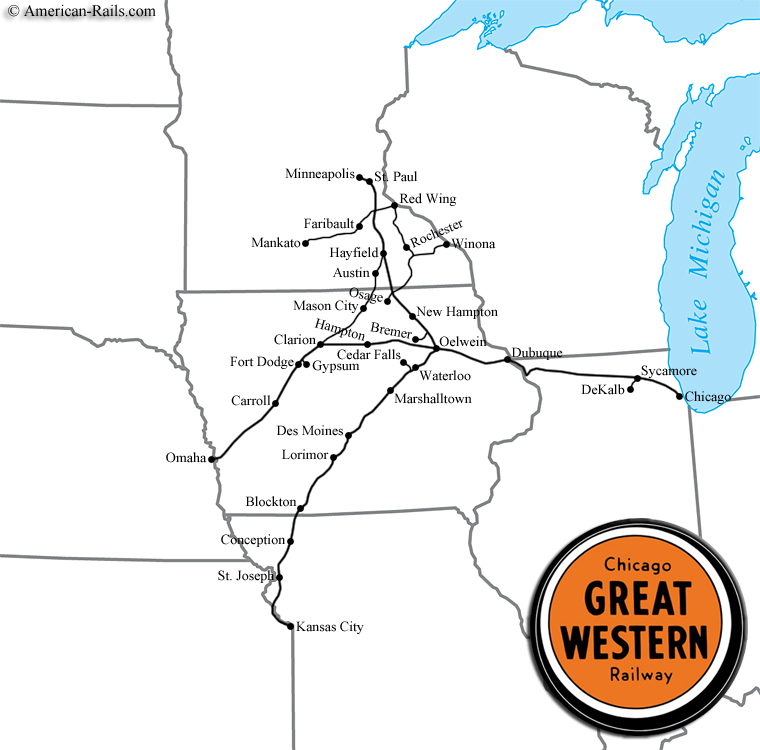
Chicago Great Western map

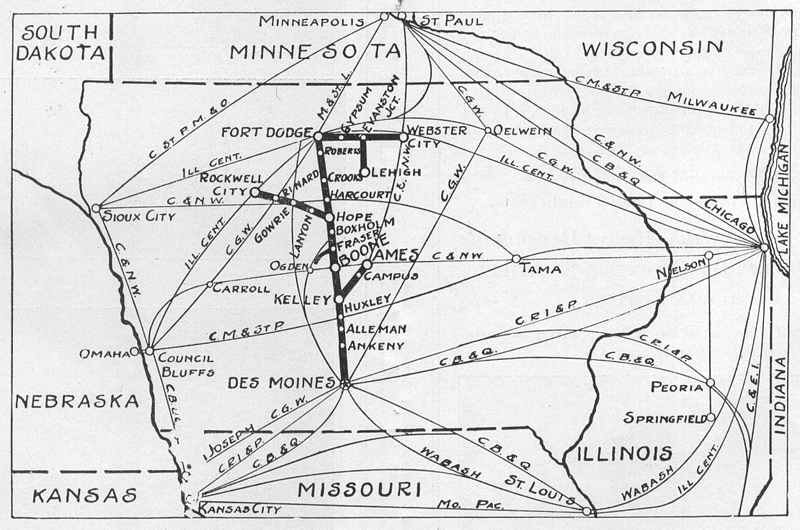
Fort Dodge, Des Moines and Southern map
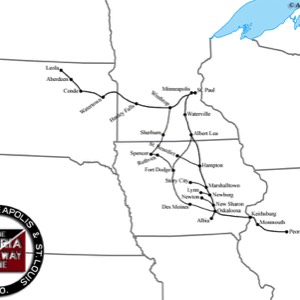
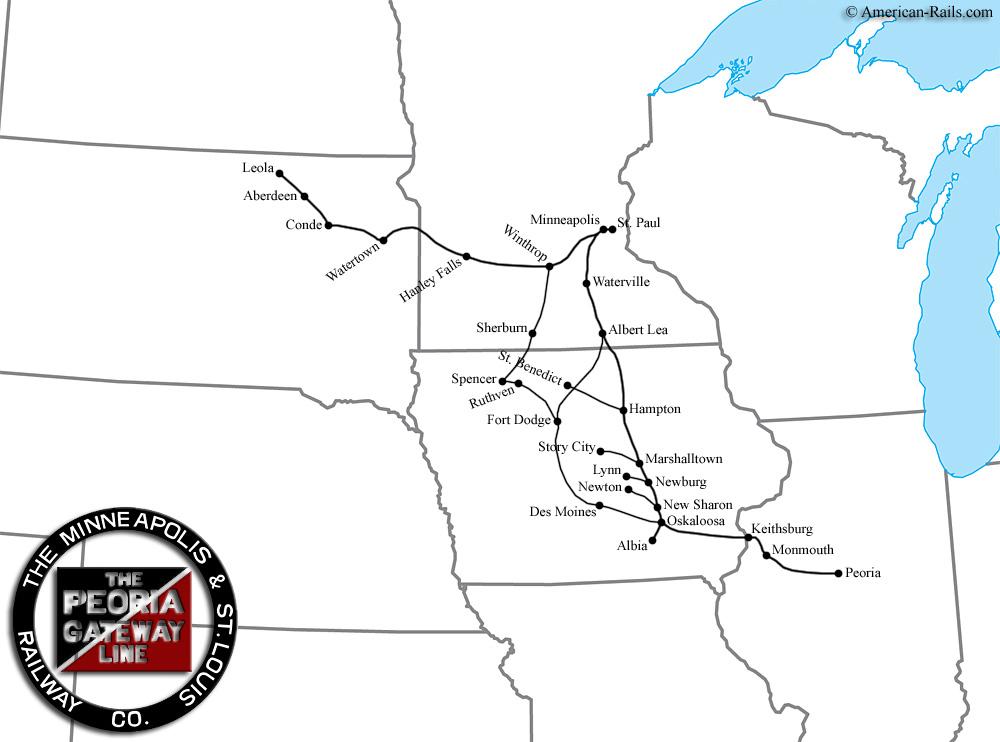
Minneapolis & St. Louis Railway map
Mike Porter’s Chicago Great Western Railway
The Chicago Great Western Railway is an eighteen year old layout that is still a work in progress. It depicts the CGW located in North-Western Iowa in the mid to late 60's. Its a time when covered wagons were in command of the daily mortgage lifter timefreights.
The CGW is a 450' long single un-signaled main track with six ample sized passing sidings. It also depicts the main line to Minneapolis.
The working Division point yard at Clarion, Iowa is represented. The yard is at the junction of the three spokes of the system that radiate out towards Chicago, Omaha and Minneapolis. The yard has 8 tracks measuring 16' long. It also serves 5 industries.
The industrial switching yard at Fort Dodge, Iowa is represented. The yard has 5 tracks and measures 18' long. This yard services two 36' industrial stub end spurs that host 18 industry spots accumulatively.
The balance of the CGW portion of the layout hosts 12 granger townsites where grain and small business are served.
98 percent of the buildings are in place and 95% of the scenery has been installed.
The CGW has six crossings with foreign railroads. Three of the crossings have been automated, one of them is controlled by a tower and two of them are gated. The signal department has completed installation of fixed 45 degree semaphore approach signals to all of them.
The independently operated Fort Dodge - Des Moines and Southern Railroad depicts the north end portion of an electric short line railroad after it was converted from Juice Jacks to GE 70 tonners. The scene is the Fort Dodge, Iowa yard and the 7 surrounding industries which measure about 52' long. The connected downtown industry site measures about 46' long and serves about 15 industries.
The independently operated Minneapolis and St. Louis Railroad area depicts a compressed version of the Soy Bean plant located at Belmond, Iowa. All of the scenery and all of the buildings are in place. It measures 30' long and there are about 20 car spots to pull and set along with interplant moves. The Plant real estate has been lengthened 42" to include new buildings, connecting conveyors and a piping rack with many colored processing and heating and cooling pipes. Also the plant trackage has been extended on both sides of the plant to include double ended trackage to facilitate loading and unloading spots and add the flexibility to run around cars.
The independently operated Chicago North Western Railroad area depicts a compressed version of the Soy Bean plant located at Eagle Grove, Iowa. 90% of the buildings are in place. It measures 50' long and there are about 20 car spots to pull and set along with interplant moves.
The independently operated Rock Island Railroad depicts a portion of a modelers combined branch line that served Clarion and Belmond, Iowa. All of the buildings are in place. It measures 50' long and there are 15 industry spots at Clarion and 4 at Belmond. The branch line now hosts four trains of different classes.
The CGW is a 450' long single un-signaled main track with six ample sized passing sidings. It also depicts the main line to Minneapolis.
The working Division point yard at Clarion, Iowa is represented. The yard is at the junction of the three spokes of the system that radiate out towards Chicago, Omaha and Minneapolis. The yard has 8 tracks measuring 16' long. It also serves 5 industries.
The industrial switching yard at Fort Dodge, Iowa is represented. The yard has 5 tracks and measures 18' long. This yard services two 36' industrial stub end spurs that host 18 industry spots accumulatively.
The balance of the CGW portion of the layout hosts 12 granger townsites where grain and small business are served.
98 percent of the buildings are in place and 95% of the scenery has been installed.
The CGW has six crossings with foreign railroads. Three of the crossings have been automated, one of them is controlled by a tower and two of them are gated. The signal department has completed installation of fixed 45 degree semaphore approach signals to all of them.
The independently operated Fort Dodge - Des Moines and Southern Railroad depicts the north end portion of an electric short line railroad after it was converted from Juice Jacks to GE 70 tonners. The scene is the Fort Dodge, Iowa yard and the 7 surrounding industries which measure about 52' long. The connected downtown industry site measures about 46' long and serves about 15 industries.
The independently operated Minneapolis and St. Louis Railroad area depicts a compressed version of the Soy Bean plant located at Belmond, Iowa. All of the scenery and all of the buildings are in place. It measures 30' long and there are about 20 car spots to pull and set along with interplant moves. The Plant real estate has been lengthened 42" to include new buildings, connecting conveyors and a piping rack with many colored processing and heating and cooling pipes. Also the plant trackage has been extended on both sides of the plant to include double ended trackage to facilitate loading and unloading spots and add the flexibility to run around cars.
The independently operated Chicago North Western Railroad area depicts a compressed version of the Soy Bean plant located at Eagle Grove, Iowa. 90% of the buildings are in place. It measures 50' long and there are about 20 car spots to pull and set along with interplant moves.
The independently operated Rock Island Railroad depicts a portion of a modelers combined branch line that served Clarion and Belmond, Iowa. All of the buildings are in place. It measures 50' long and there are 15 industry spots at Clarion and 4 at Belmond. The branch line now hosts four trains of different classes.
Layout Accessibility Information

Layout is in basement down steps. Ground entrance is available.
The restroom is located in the basement area.
The restroom is located in the basement area.
Recent video shot by Railfan Jason:
This Layout was featured in the May 2017 issue of Railroad Model Craftsman*
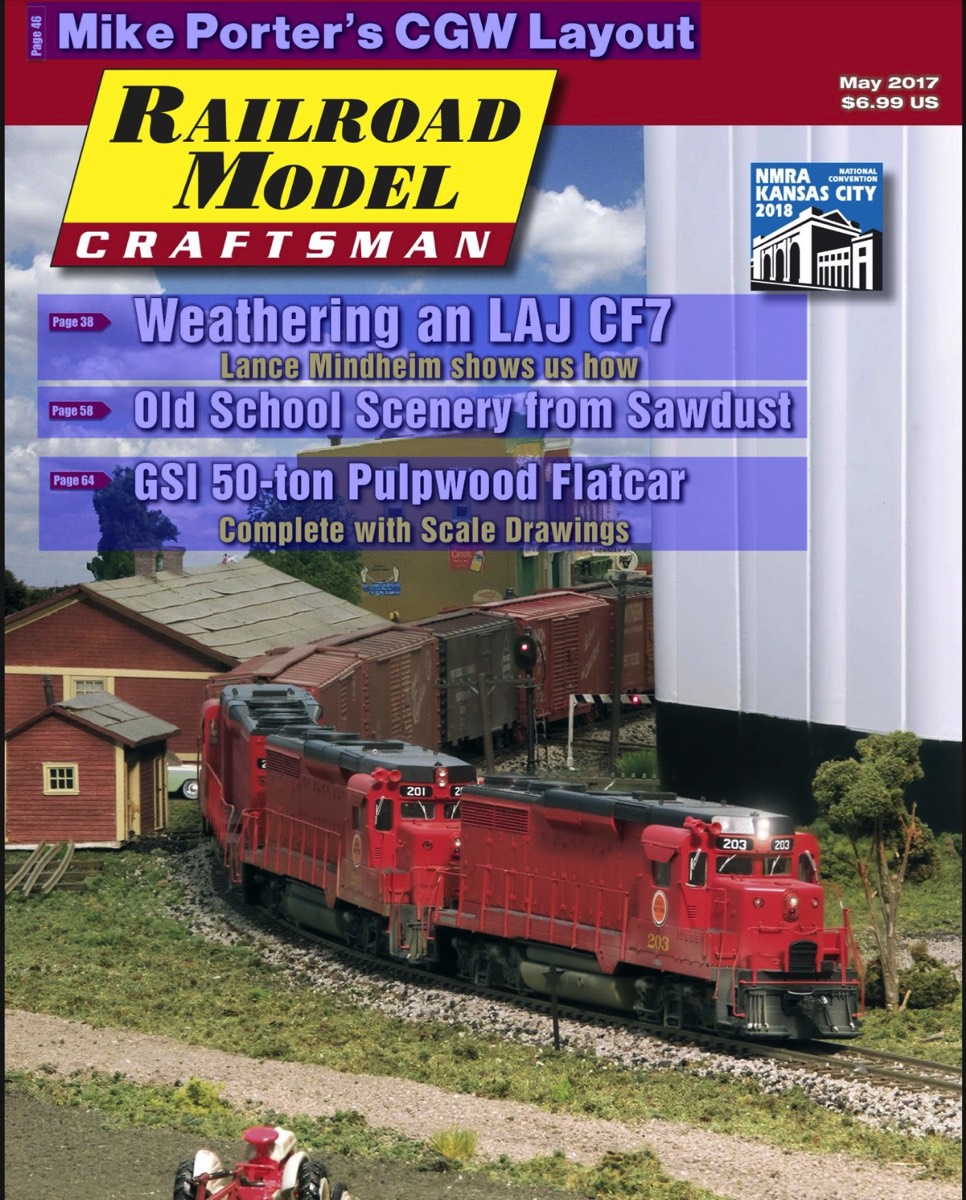
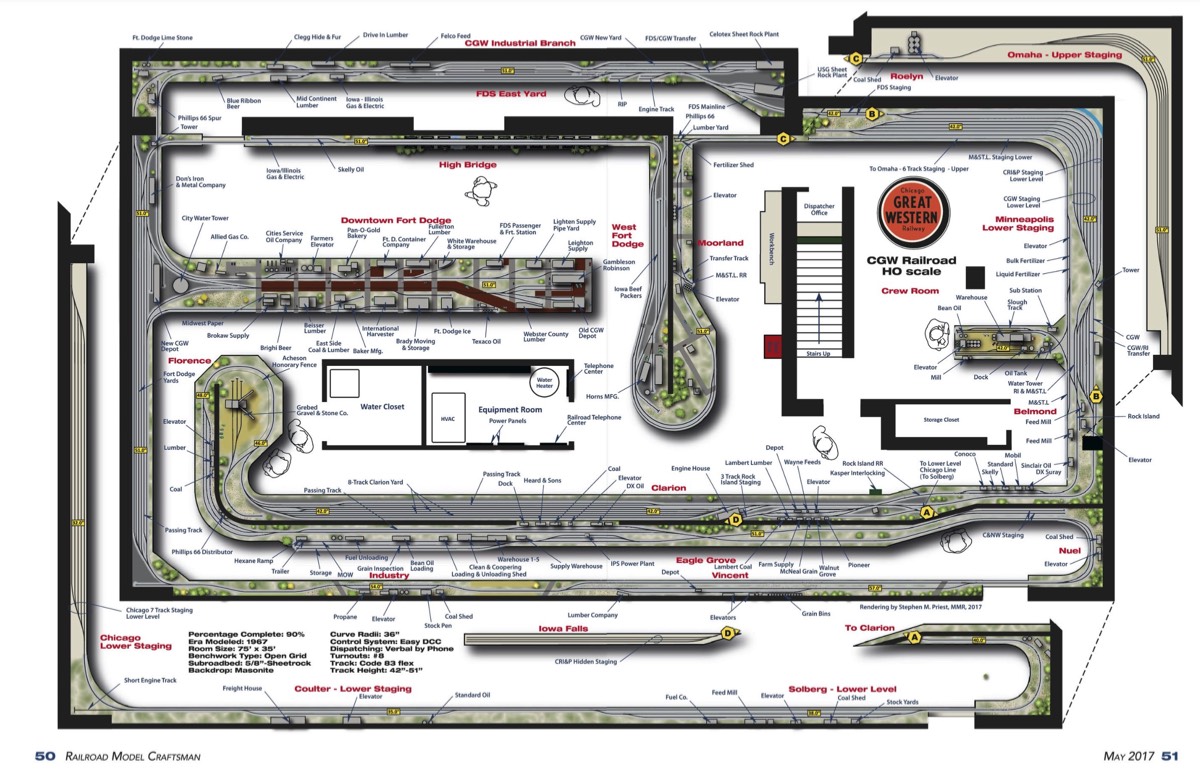
* Permission to use images obtained by publisher
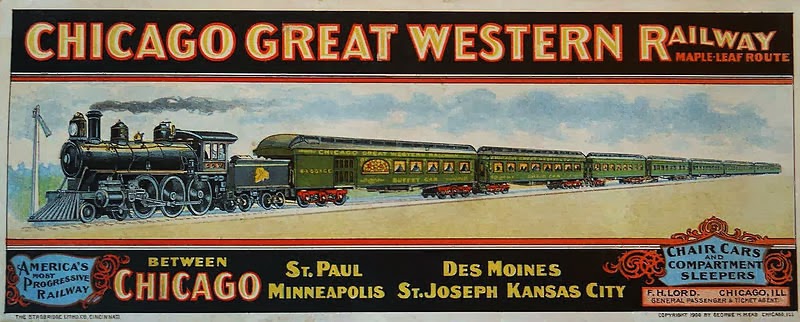
Layout at a Glance

Layout at a glance
- HO scale
- The room size is 75 X 35 and/or 3100 Square Feet. The home has a suspended garage floor and a suspended front porch to accommodate more model railroad space commonly known as the Man Cave.
- Several of the locomotives (known as Motors on the CGW) have sound and working Mars lights.
- 98 percent of the turnouts are hand thrown.
- Normal time freight size is 30 cars.
- The traffic velocity as compared to the Prototype is enhanced by 433%.
- 90 percent single level
- Linear in design
- Easy DCC - eight radio throttles and six tethered throttles
- The CGW is verbally dispatched
- Push to talk phone system on the CGW
- 3-1 fast clock
- Straight forward Plain Jane waybills
- Color coded waybill boxes reflecting the road involved
- Repurposed key board trays to conductors desks
- Four independent switching areas
- Small CTC panel at a junction and crossing
- Four crossings with interlocking plants
- 15' bridge
- Huge water tower at Fort Dodge
- Three staging yards
- Emergency battery powered lights
- Ground entrance available
- Restroom available in the basement area
Jobs on the Layout
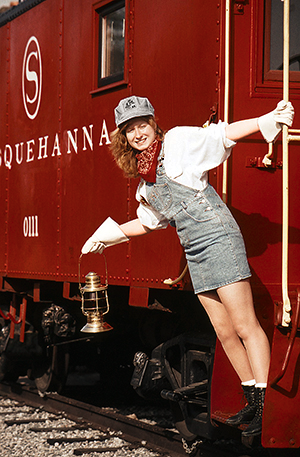
Jobs on the Layout
Chicago Great Western Jobs:
Fort Dodge - Des Moines and Southern jobs:
Minneapolis and St. Louis job:
Chicago North Western job:
The Rock Island jobs:
- Train Dispatcher for the Chicago Great Western. He/she directs train movements on the main track via telephone. We use the “Mother May I” scheme. Train movements are tracked on a full-sized paper Train Movement Sheet and/or magnet on a track diagram. The job is busy.
- Foot Board Yardmaster (FBY) for the CGW Clarion yard. The FBY segregates traffic in three different directions. This job is both interesting and busy.
- Foot Board Yardmaster for the Fort Dodge yard. The FBY segregates blocks of cars that have been set out by the Timefreights and blocks the fill cars for the same. This job also arranges cars in sequential order for the turnaround job to set at the 18 industries located on two downtown industry tracks. This job is a steady low pace. .
- Engineer/Conductor for the CGW Turnaround job which runs from Clarion to Fort Dodge, pulls and sets the 18 downtown industries and works the seven branch line industries. This job has its own independent yard called The New Yard. This job is a steady medium pace.
- Pool crews will protect both freight and passenger trains without fail. All of the pool crews set out and pick up on their own cars.
Fort Dodge - Des Moines and Southern jobs:
- FDS Foot Board Yardmaster segregates a 20 car train and an eight car train. Then lines up the cars up in sequence for a shoving delivery for the down town job. It also switches eight industries. Then this job builds two outbound trains.
- FDS Downtown Job pulls from the fifteen down town industries; lines up his return train in outbound station order, makes up a switch list and returns to the main yard. Then this job shoves the set cars downtown and spots the cars at the industries. This job may be instructed to work the other industries in the man yard area. Both of these jobs are busy.
Minneapolis and St. Louis job:
- This job is a turnaround plant switcher. It arrives in town with cars for the soy bean plant and other industries in the area. The outbound cars are pulled from the plant, interchange cars are pulled and delivered and the inbound cars are set. There is some interplant moves and other industries to work in the area. There is about 20 car spots. The job returns in the opposite direction. This job is low key.
Chicago North Western job:
- This job is another turnaround plant switcher. It arrives in town with cars for the soy bean plant and other industries in the area. Outbound cars are pulled from the plant and the business tracks and the inbound cars are set. There are some interplant moves and other industries work in the area. There are about 20 car spots. The job returns in the opposite direction. This job is low key.
The Rock Island jobs:
- This job works two townsites on a 50' main track. The jobs will work a series of four (4) assignments.
- The first assignment is called a Limited Through Freight or something like that. It sets out cars at two locations at Clarion and three locations at Belmond. NO PICK UP'S. Then on to the staging at Estherville.
- Next is a dedicated Meat train that runs from Estherville staging, to Belmond, Clarion and on to the staging yard at Iowa Falls.
- Next lurking in the staging yards at Iowa Falls is the local from and / or to Hell. The makeup of the train is labeled as a Dog's Breakfast, Clam Shelled, Shot Gunned or Mine Runned. No Rhyme or Rhythm to how the switch crew assembled it at the Iowa Falls Yard. The assignment works fifteen industries and a CGW transfer at Clarion. After soldiering through this chaos the job struggles on to the next townsite at Belmond to work the three industry spots and two interchanges. Then on to the welcomed Estherville staging.
- The last train is a breath of fresh air. It operates a Doodlebug with one express car from Estherville staging to the Clarion Depot and ties up. The four jobs are somewhat interesting and you are by yourself so you have no one else to blame for mistakes. Know that the four jobs working at Clarion operate over a crossing of the CGW main line using an interlocking device. Also be informed that the interlocking has a fleeting feature favoring the Rock.
- The fun value on these Rock Island jobs is somewhat questionable, somewhat frustrating, however, the fleeting feature at the interlocking plant favoring the Rock makes the experience more favorable. "Take that Great Weedy, We are the Rock and don't you forget it!"
About the Layout Owner
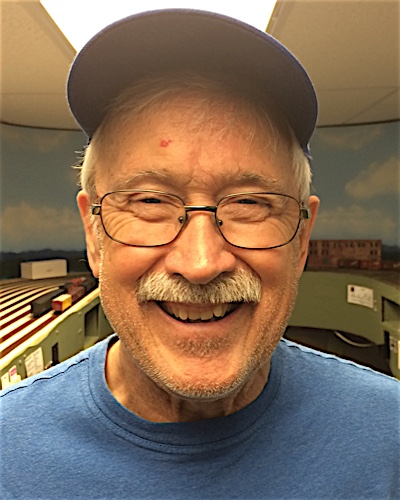
About the Layout Owner
Mike Porter (known locally as “Cliff”, “Cliff Clavin”, and “Saucy Jack, the Yarnspinner”)
I started the hobby with an American Flyer train at the age of 10. As a junior in high school I started my railroad career as a student telegraph operator at the joint agency of the Illinois Central Railroad and the Minneapolis and St. Louis Railroad at Tara, Iowa. I also did student work at the Chicago Great Western Railway depot at Fort Dodge, Iowa. Upon graduation from High School I hired out as a switchman / engine foreman on the Illinois Central Railroad at the Fort Dodge yard.
I had the opportunity to work the Omaha, Sioux City and the Waterloo road districts while employed by the I.C. I was cut off as a result of the Public Law Board 282 award (fireman award) and I hired out as a brakeman on the Minneapolis and St. Louis Division of the Chicago North Western at Fort Dodge. I worked on the Des Moines, Spencer/Estherville and the Albert Lea districts. I separated from the railroad and began a career as a apprentice electrician. I attended night apprenticeship school and worked in the day time for electrical contractors for four years in order to obtain my journeyman rating. I worked the construction trade for 10 years.
The Chicago North Western called me back to work as a locomotive fireman and I attended their formal engineers school in Chicago. I was promoted to Locomotive engineer and I worked out of eight terminals while assigned to the Fort Dodge Terminal. In 1979 I relocated to Kansas City, MO with the CNW and worked out of the former CGW Ohio Street Yard until it closed in 1983. Jump ahead to 1996 when the CNW was ingested into the Union Pacific. I finished my career with the UP and retired at the age of 69 years old.
I had always thought of building a model railroad but work and family came first. At the age of 63 and with a ton of help from local modelers we built the CGW and the other connecting roads. I installed a lot of the electrical work and the phone work but I had lots of help with the bench work, the electronics and the continuing task of installing scenery.
In addition to my 42 year railroad career I completed a 39 year career with the Air National Guard and the Air Force Reserve.
It has been a great journey with good friends in the model railroad community and I would not change this experience for the world.
More about the Layout
More about the Layout
The layout is a sheet rock layout. I was inspired by the group in LaCrosse,WI who used sheet rock for their table tops. I also asked four of our local engineering type modelers if there was anything wrong with using sheet rock and I received a resounding "its OK to use!" The only thing I found objectionable was when we cut it with a Roto-Zip we had to follow it with a shop vac. Its been in place since 2006 and it has proven to be OK. The second reason I used sheet rock is that it was economical. The LaCrosse group shared with me that a tightwad CNW engineer from Chicago used the sheet rock method many years ago and it was again OK at that time. Since I constructed my layout with sheet rock a total of five more modelers followed suit and are happy with the results.
There are only two rules on the CGW and the foreign lines. Rule #1 - Have fun! Rule #2 - Keep the radio throttles tethered around your neck.
The atmosphere in the basement is laid back, non judgmental and forgiving. My goal is for everyone to have fun; that's what its about.
There are only two rules on the CGW and the foreign lines. Rule #1 - Have fun! Rule #2 - Keep the radio throttles tethered around your neck.
The atmosphere in the basement is laid back, non judgmental and forgiving. My goal is for everyone to have fun; that's what its about.
Track Diagrams
Track Diagrams
Here are track diagrams for the primary locations on the layout
(click each header to view the diagrams)
(click each header to view the diagrams)
Photo Gallery
(Click to embiggen)
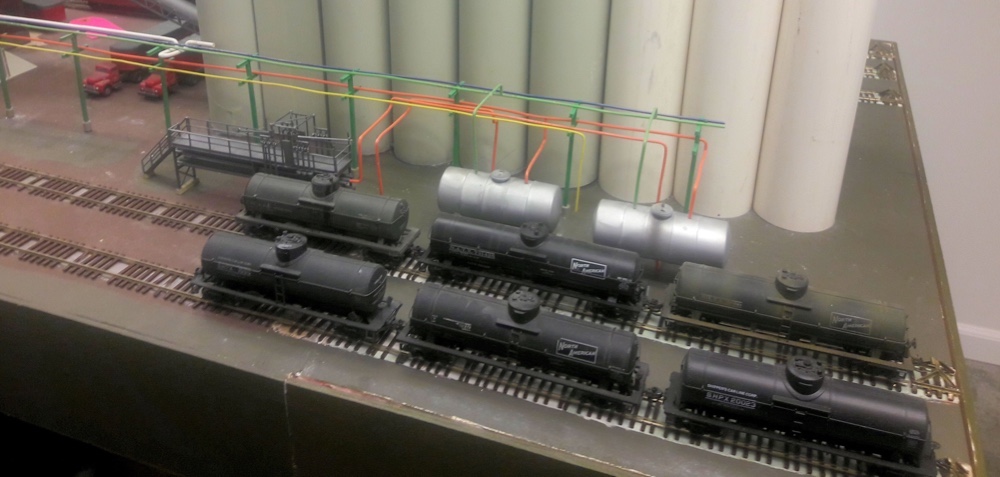
A new 42" extension of the layout to accommodate a tank car cleaning track, a soybean oil load out track and an additional runaround track at the M. & St. L. Belmond Central Soya processing plant.
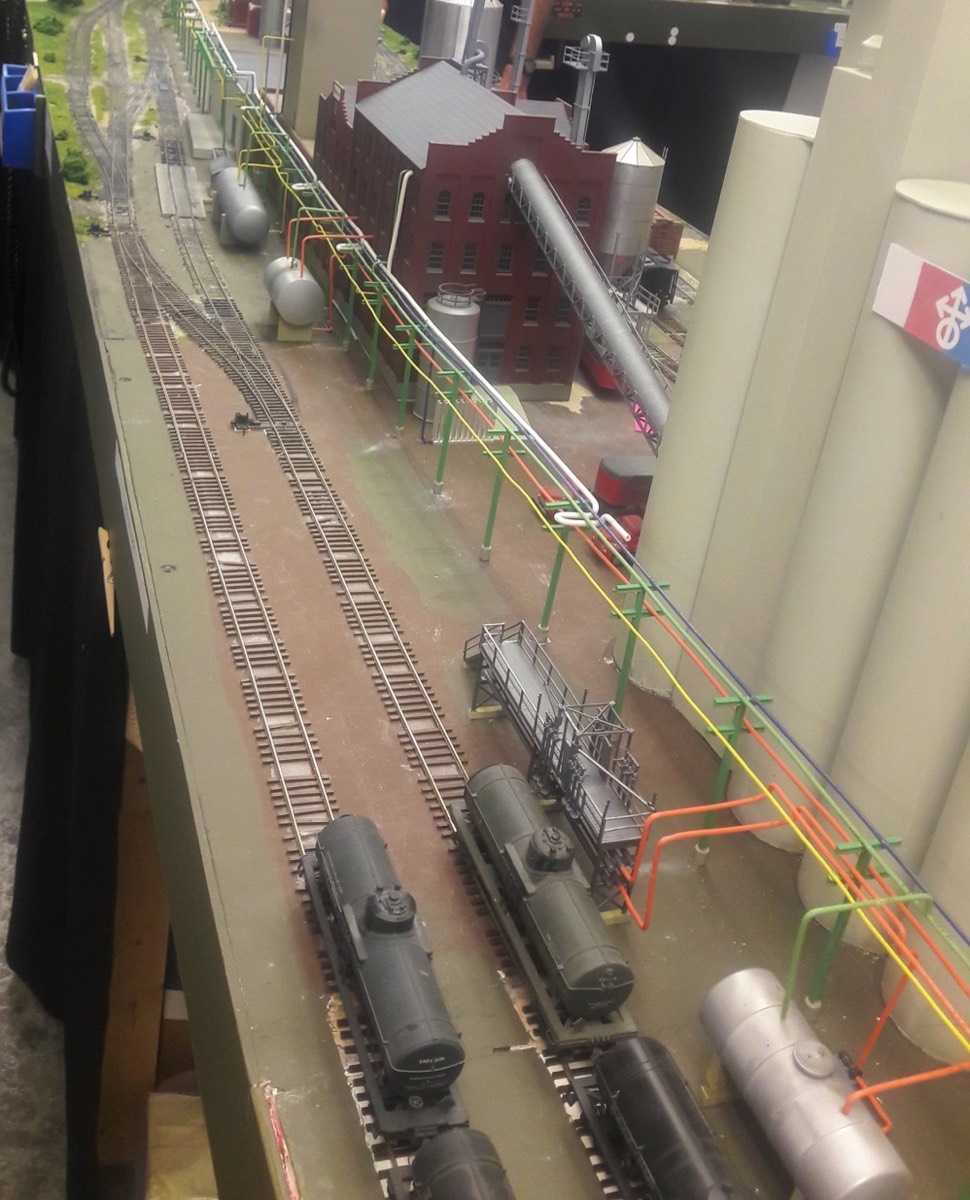
J.D. Spicher and Lynn Masoner's excellent pipe work at the M. & St. L. Belmond Central Soya processing plant.
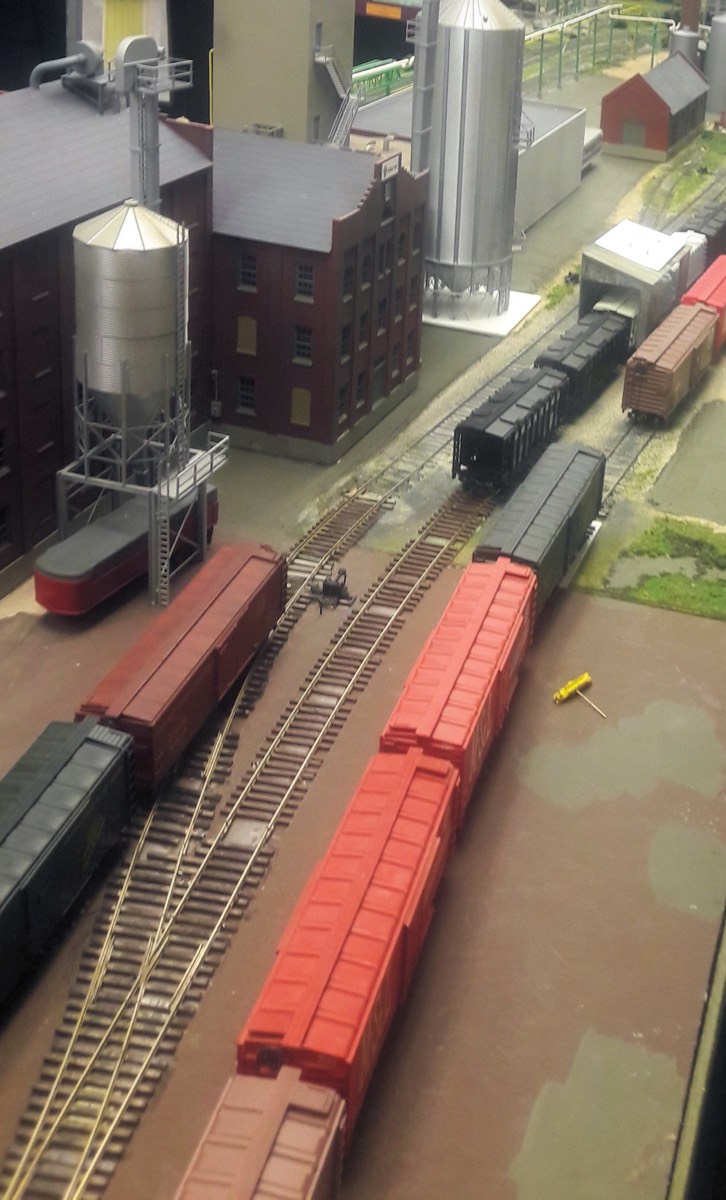
J.D. Spicher and Keith Robinson's handiwork at the Central Soya's new Federal grain inspection area, the meal loadout shed, the soybean dump track and the new track crossover.
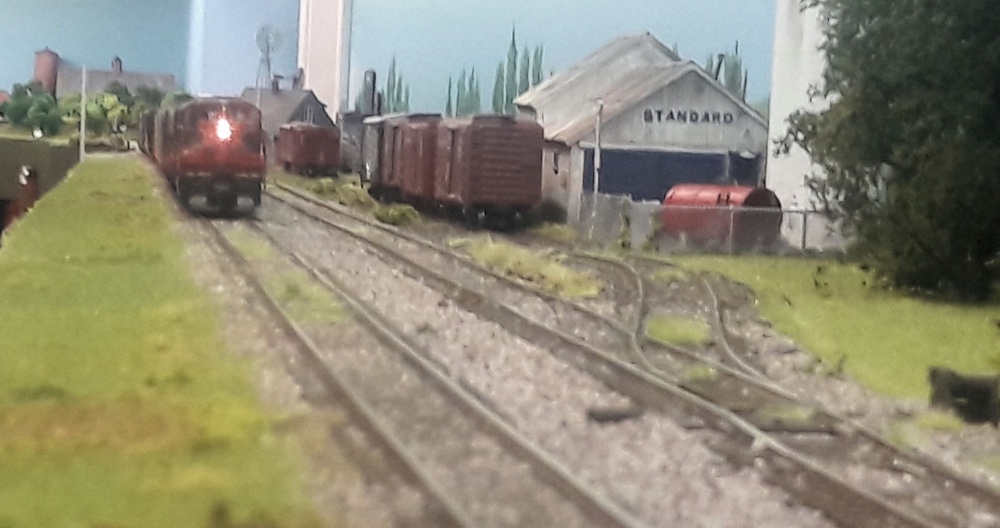
CGW Extra 120 East at Solberg. Note the new static grass that was installed by Bill Hirt and the backdrop images which were installed by Dave Acheson
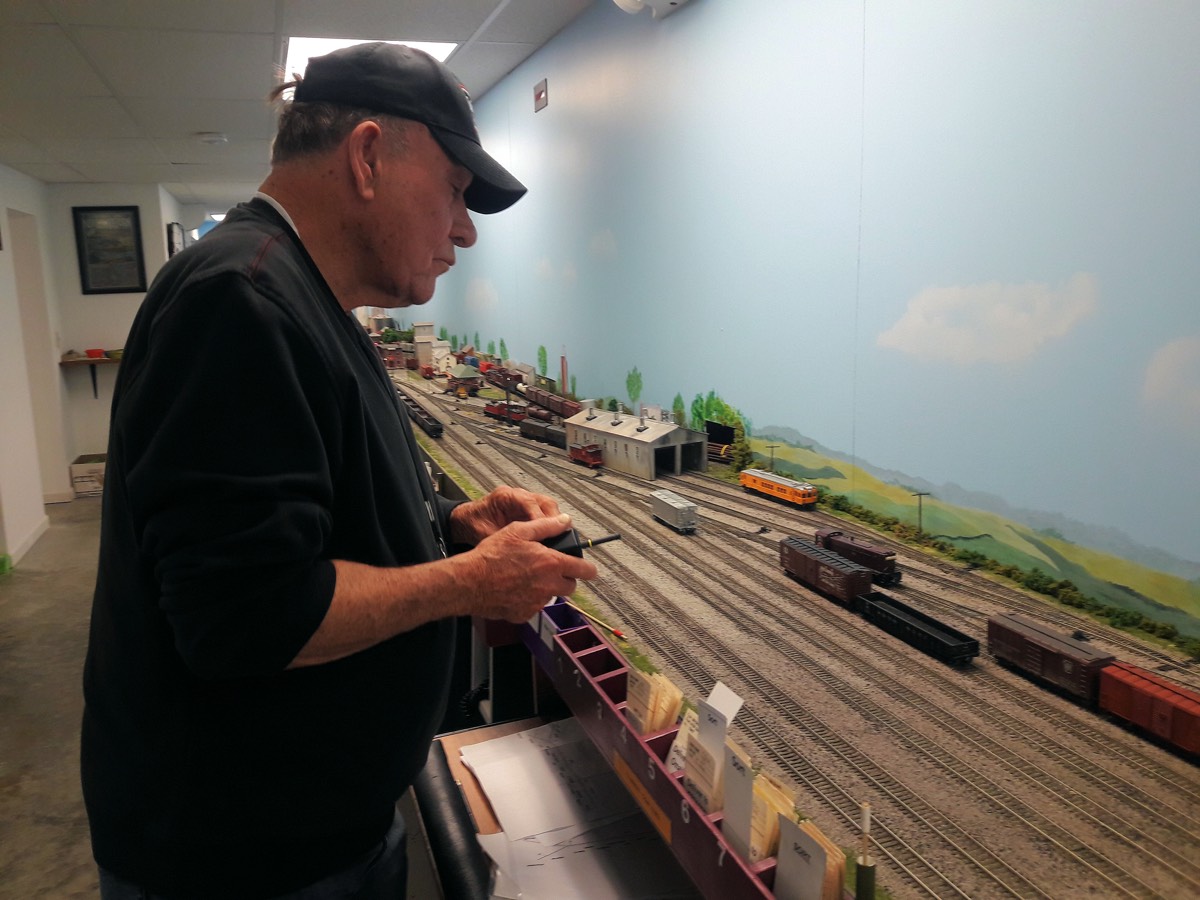
Footboard Yardmaster Jim McCroskie switching cars at the CGW Clarion Yard.
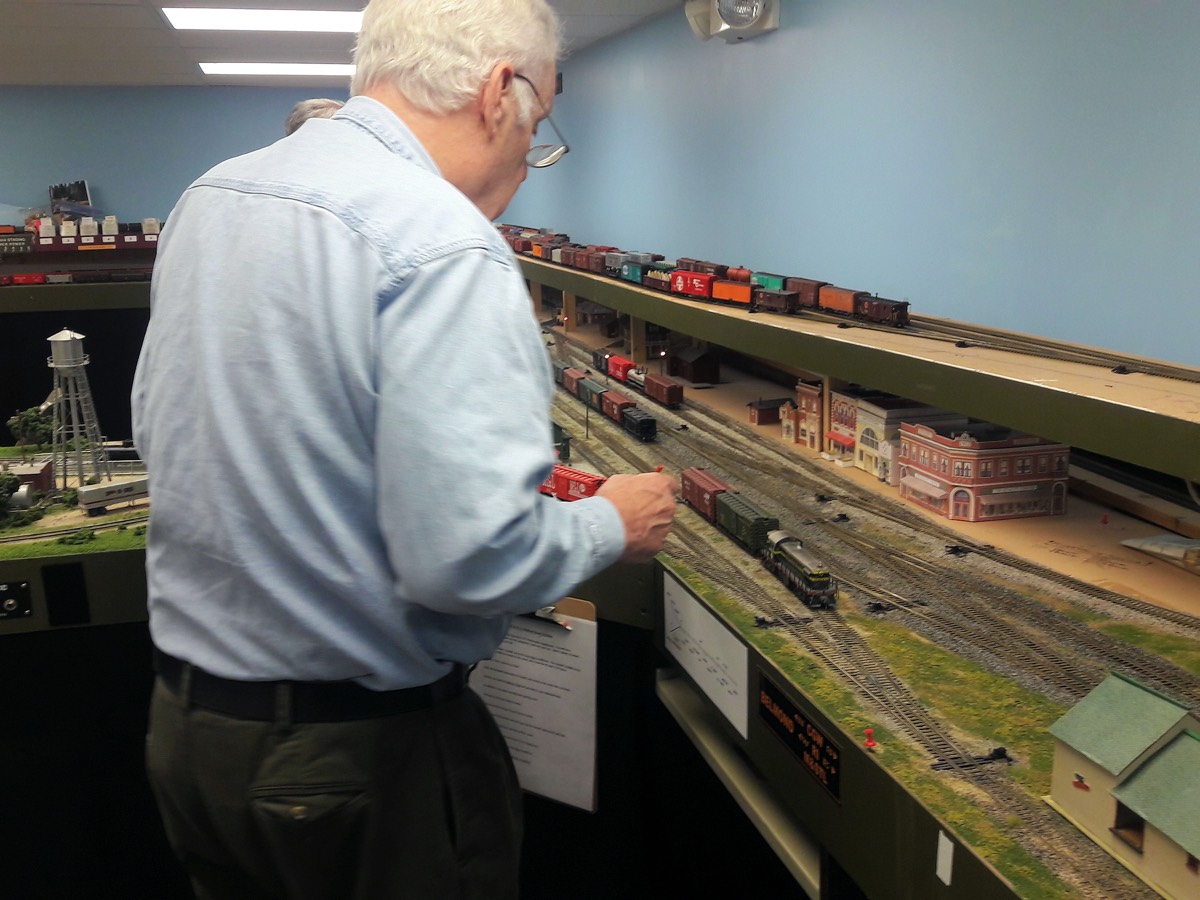
Engineer Dave Acheson bringing the M. & St. L. turnaround job into the Belmond, Central Soya plant.
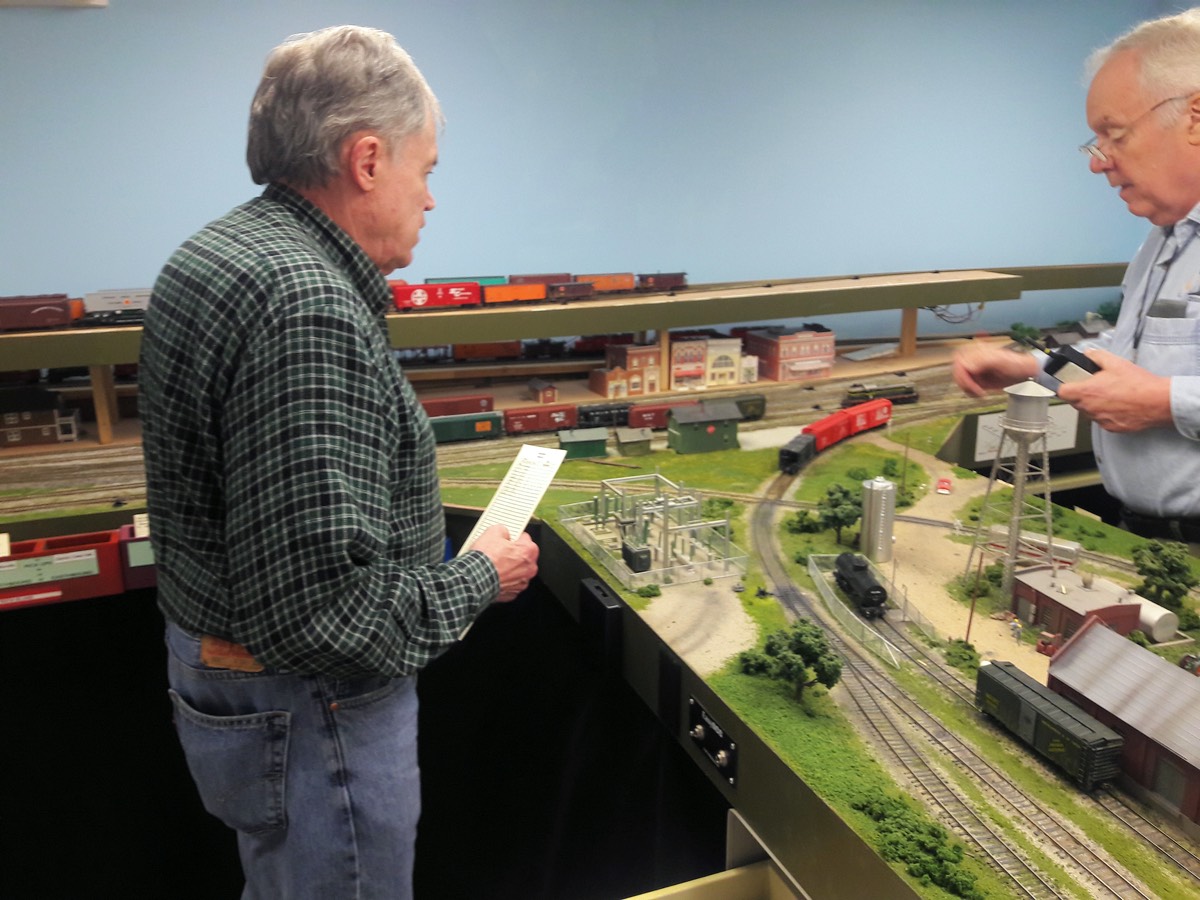
Conductor Mike McLain and Engineer Dave Acheson switching at the Belmond Central Soya SoyBean plant.

In the foreground the Fort Dodge - Des Moines and Southern Downtown Job. In the background is the CGW Fort Dodge, Iowa Main Yard.
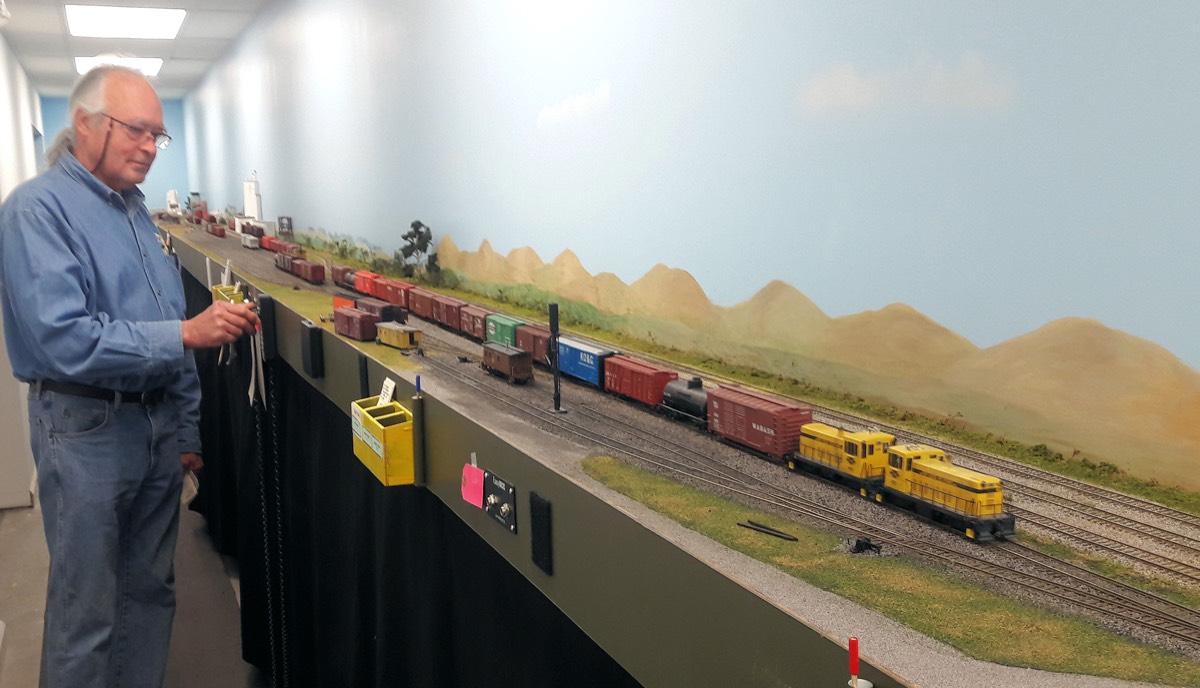
Footboard Yardmaster J. D. Spicher switching at the FDS East Yard.
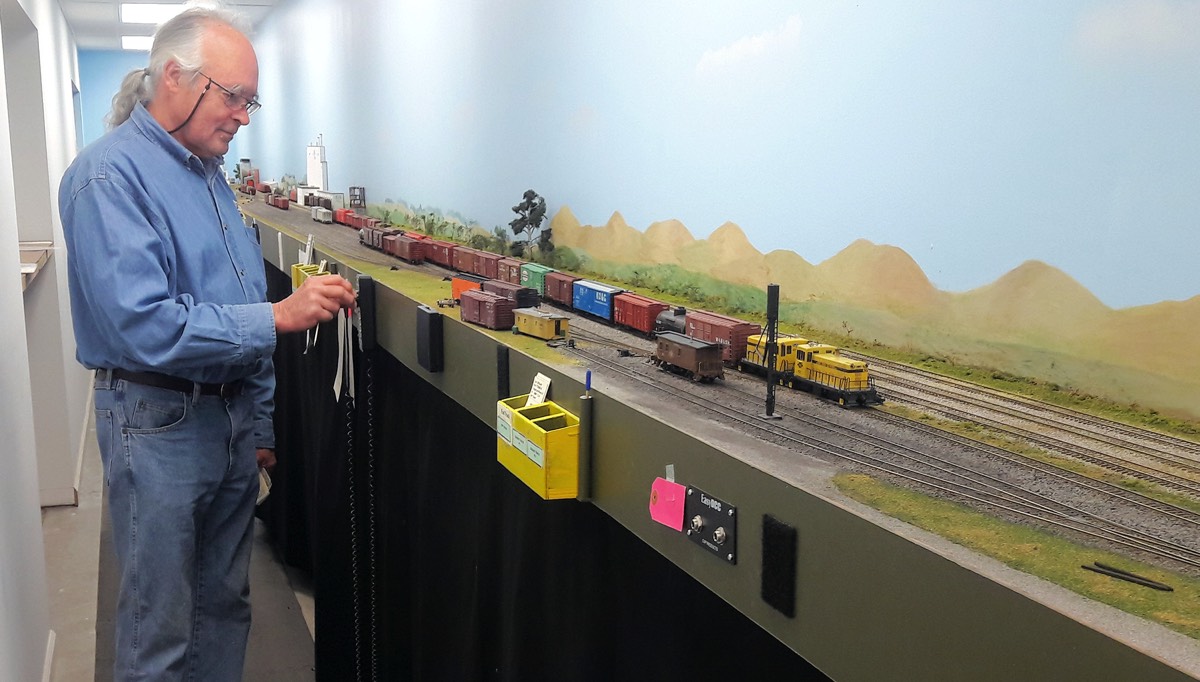
Footboard Yardmaster J. D. Spicher switching at the FDS East Yard.
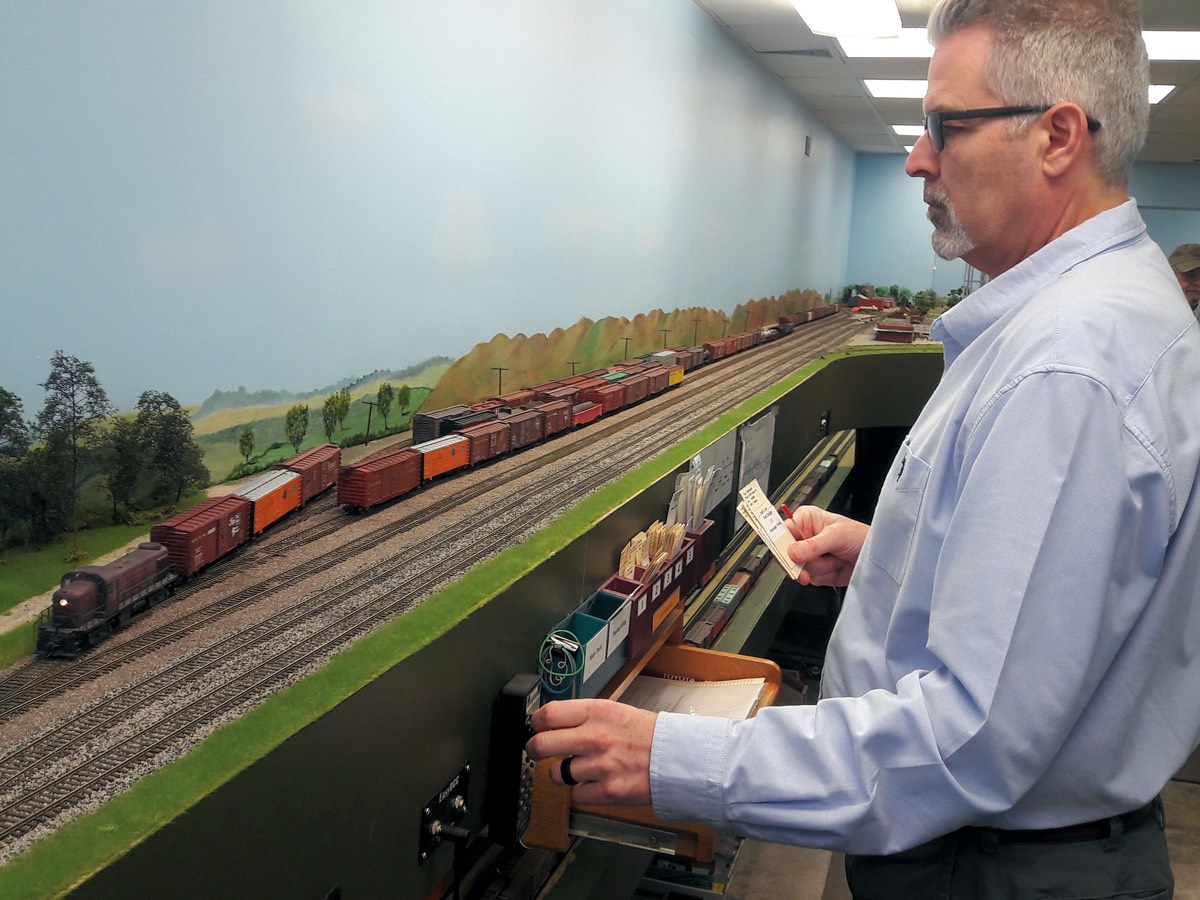
Footboard Yardmaster Rob Biddison switching at the CGW Fort Dodge Main Yard.
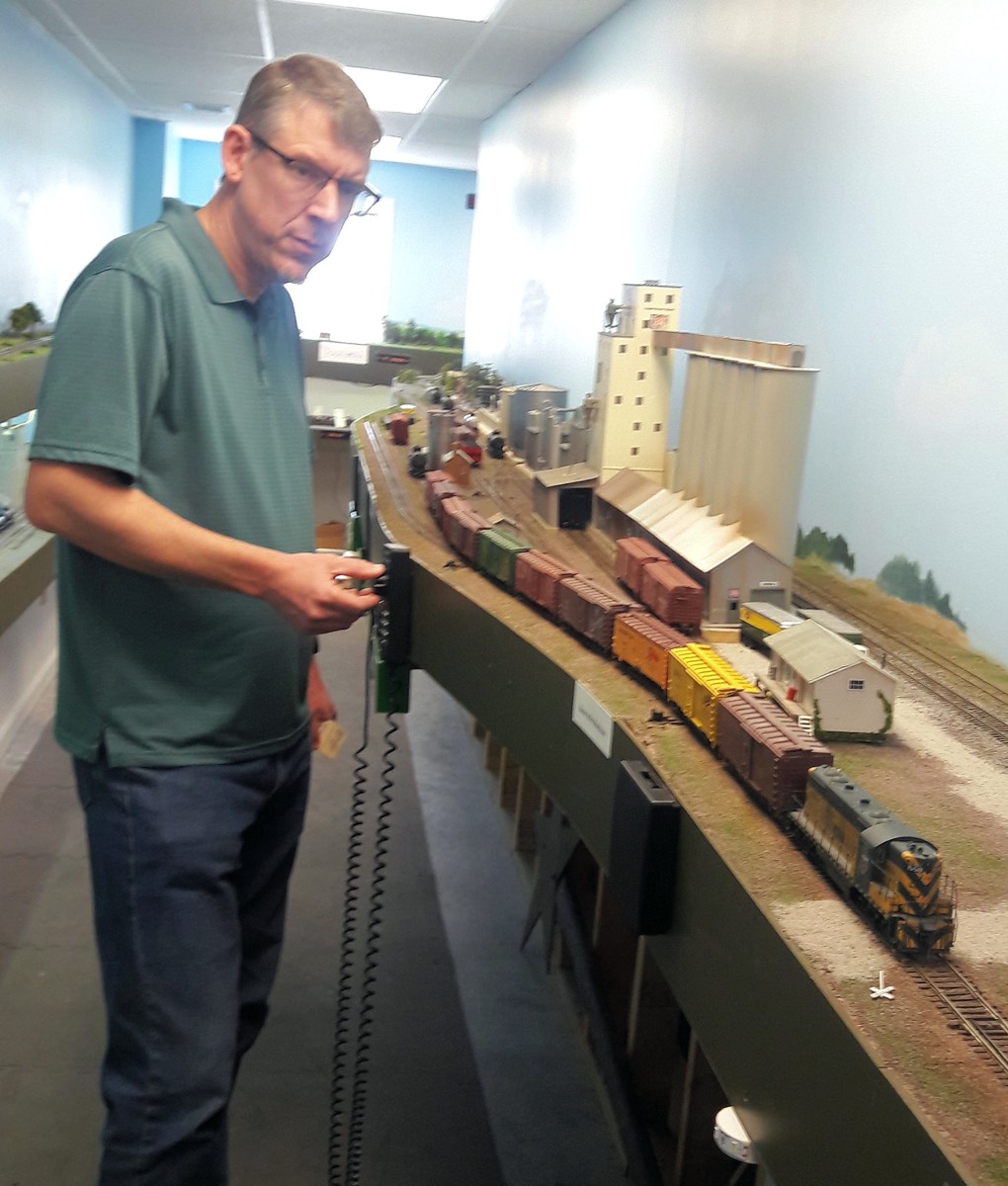
Conductor / Engineer John Acheson switching cars at the CNW Eagle Grove Boone Valley Soybean Plant.
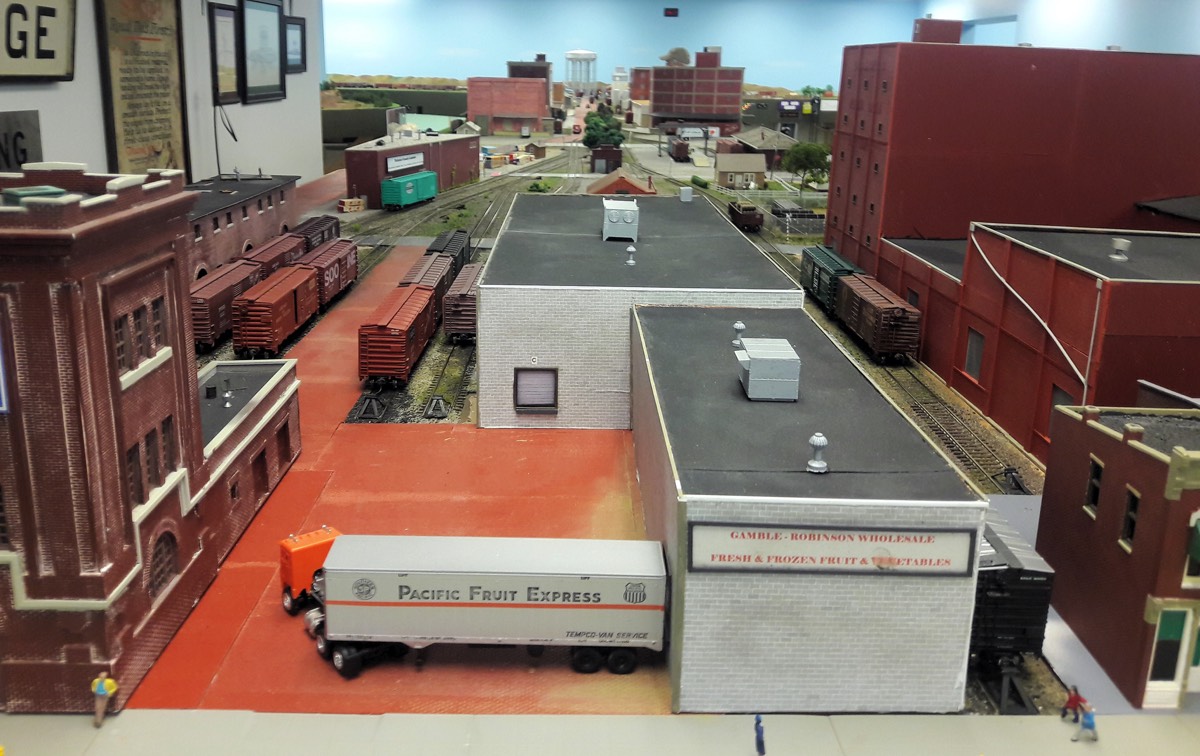
View looking up the Fort Dodge, Iowa Central Ave. street. On the right side of the Gamble Robinson building is the FDS industry downtown trackage. On the left is the CGW downtown industry trackage.
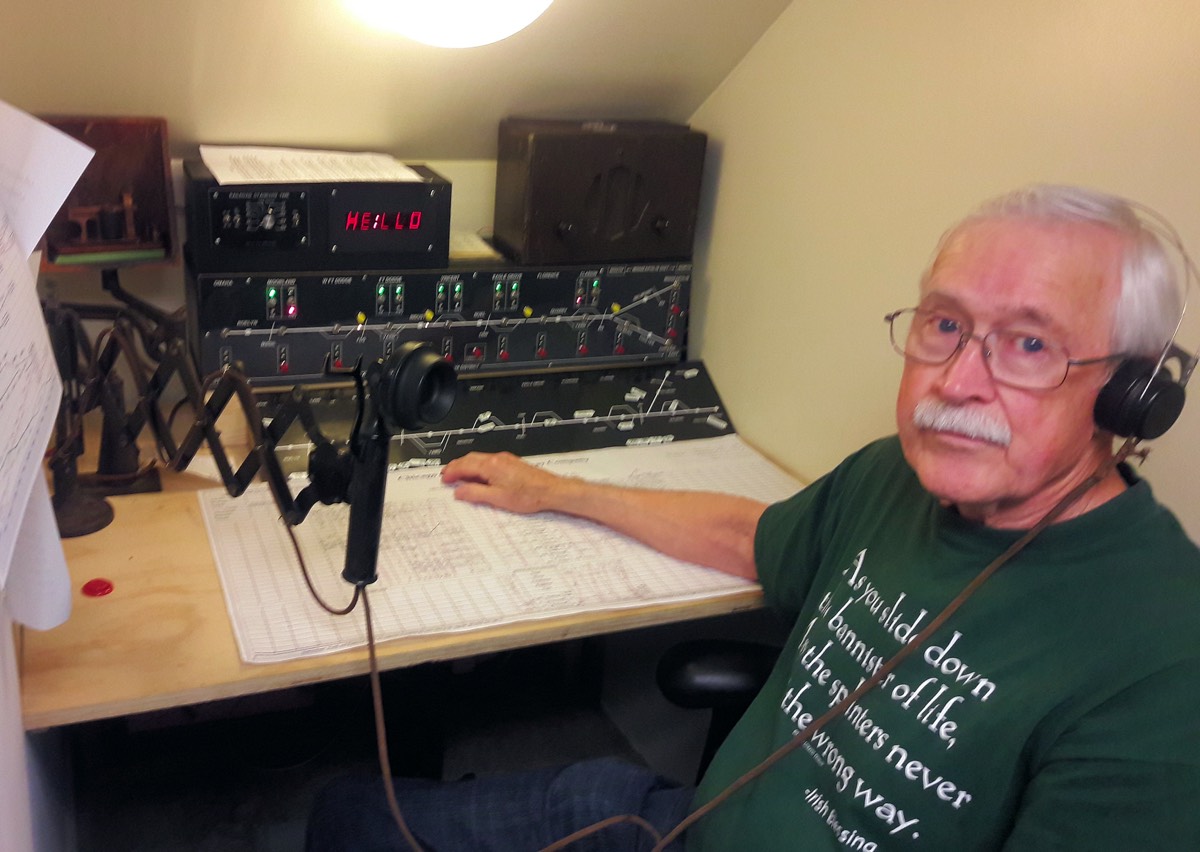
Mike Porter at the CGW dispatcher's desk.
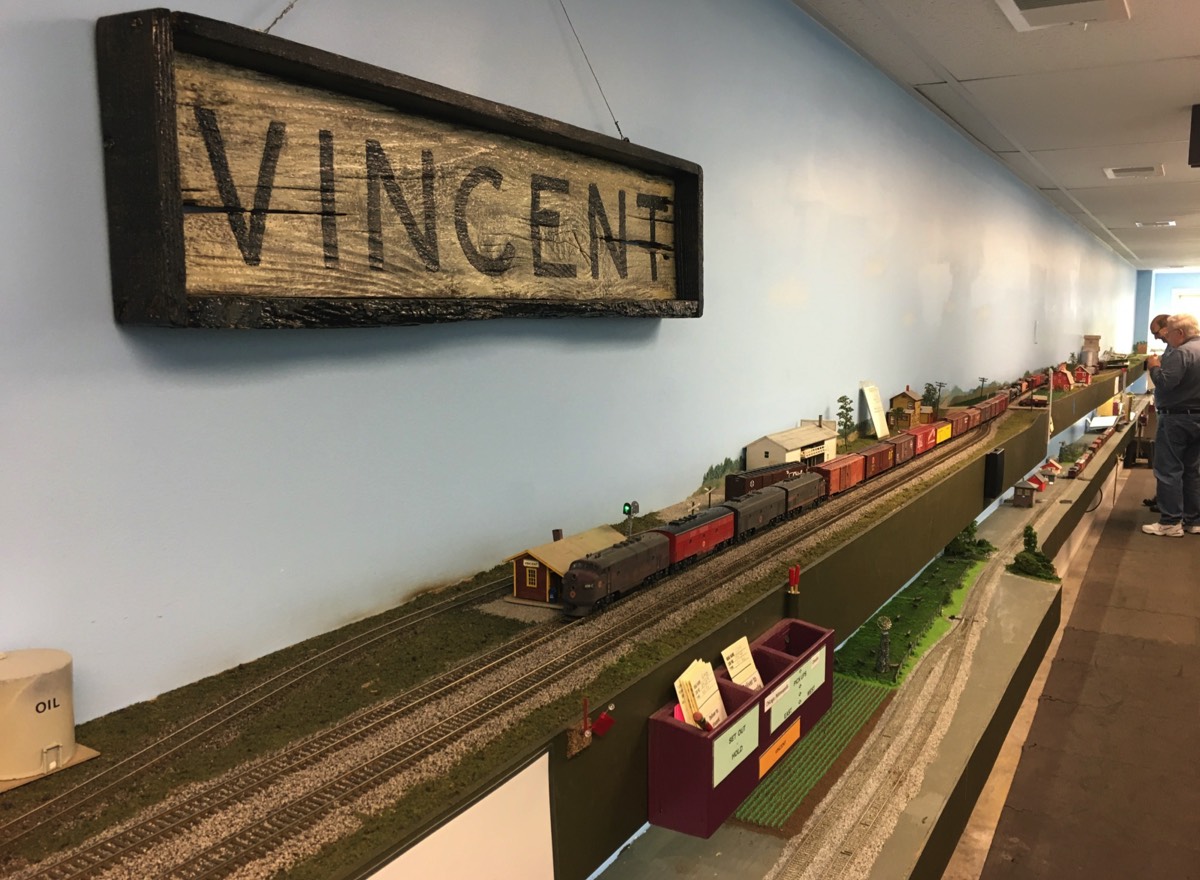
Eastbound Timefreight rumbling past Vincent
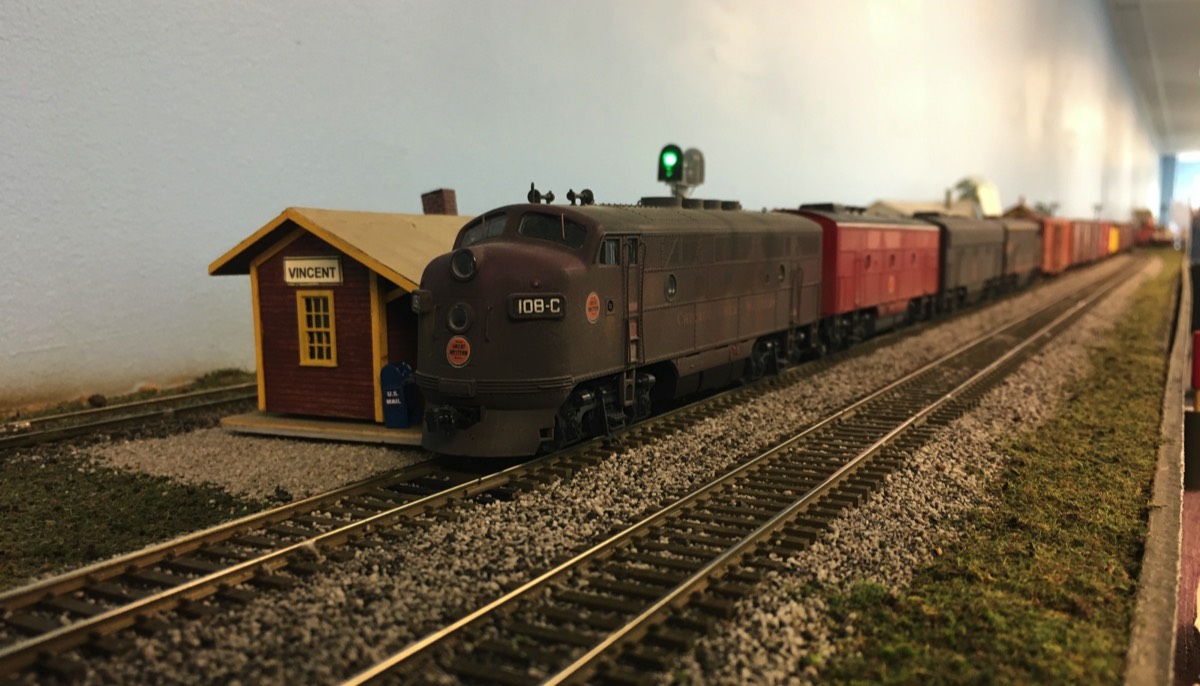
Eastbound Timefreight rumbling past Vincent
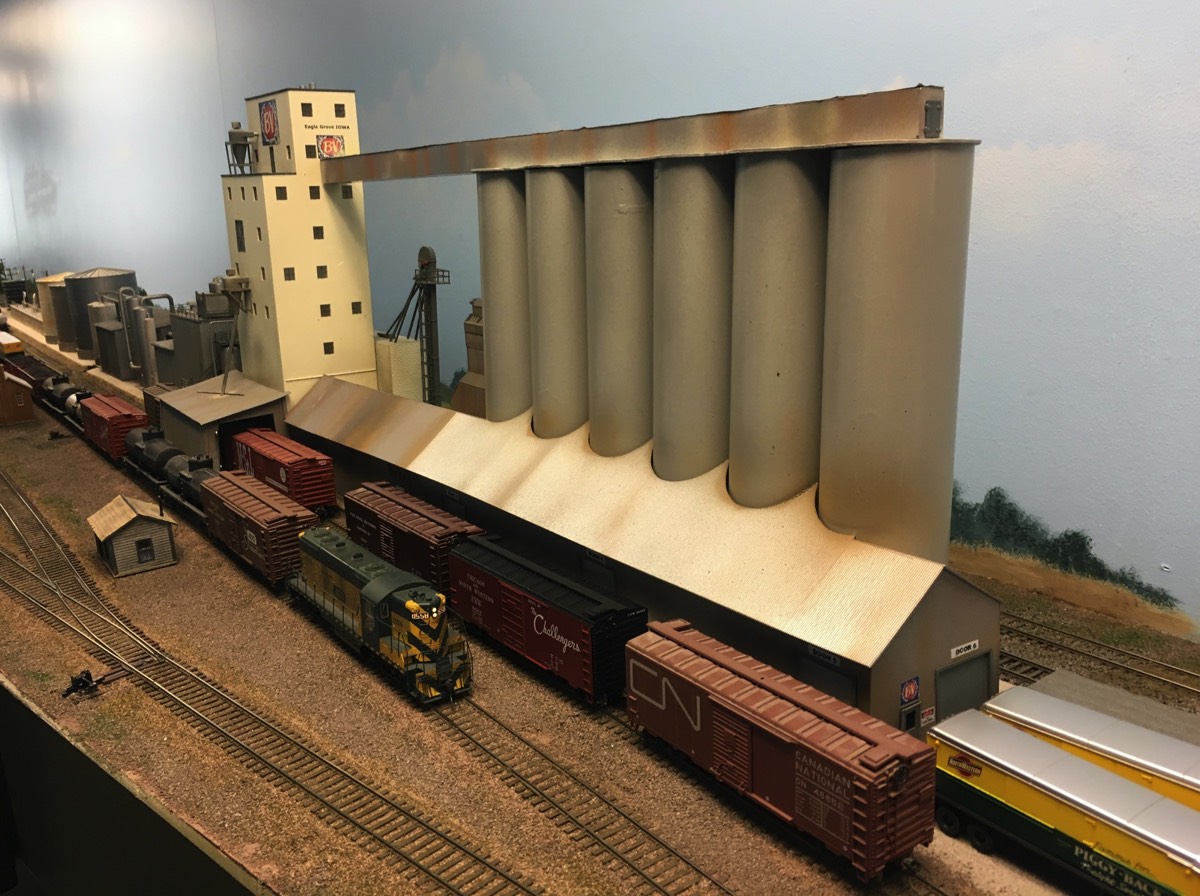
Chicago North Western plant switcher working the Central Soya Plant at Eagle Grove, Iowa
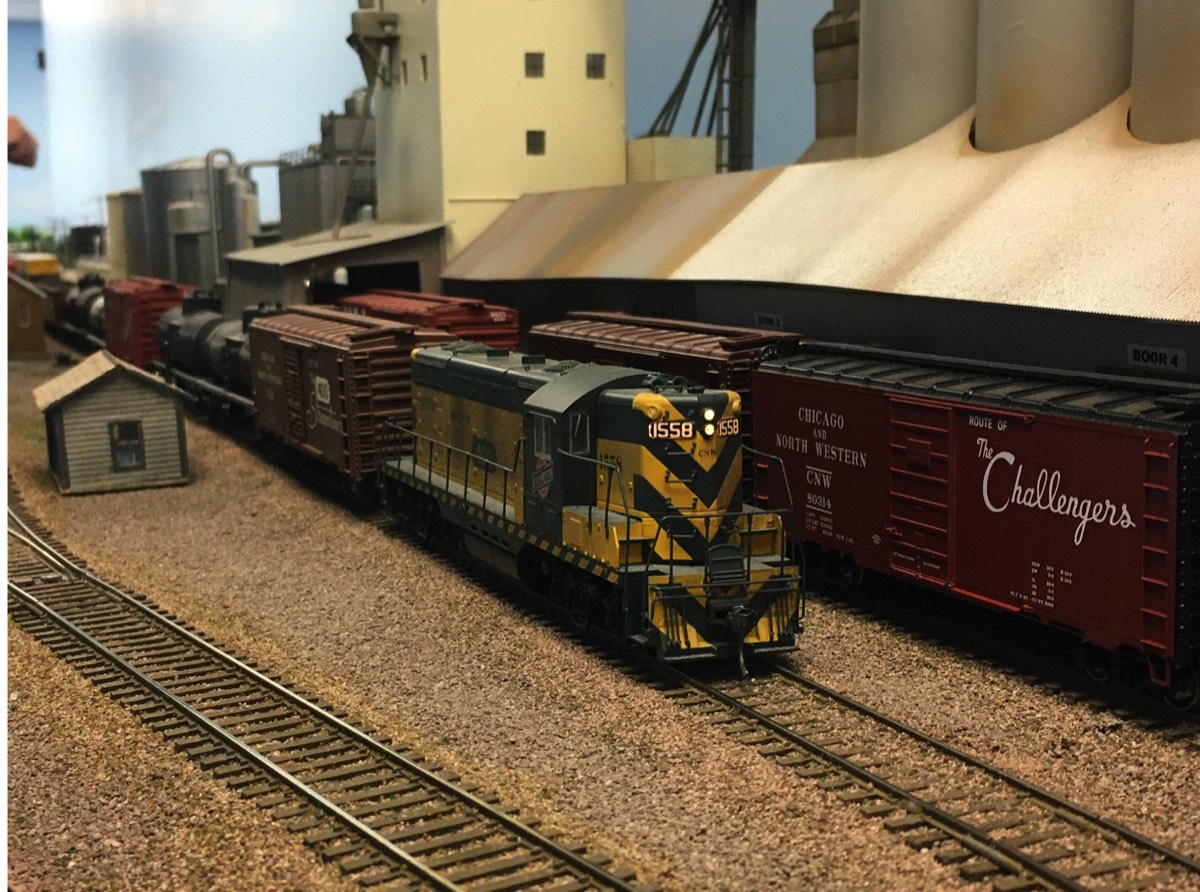
Chicago North Western plant switcher working the Central Soya Plant at Eagle Grove, Iowa
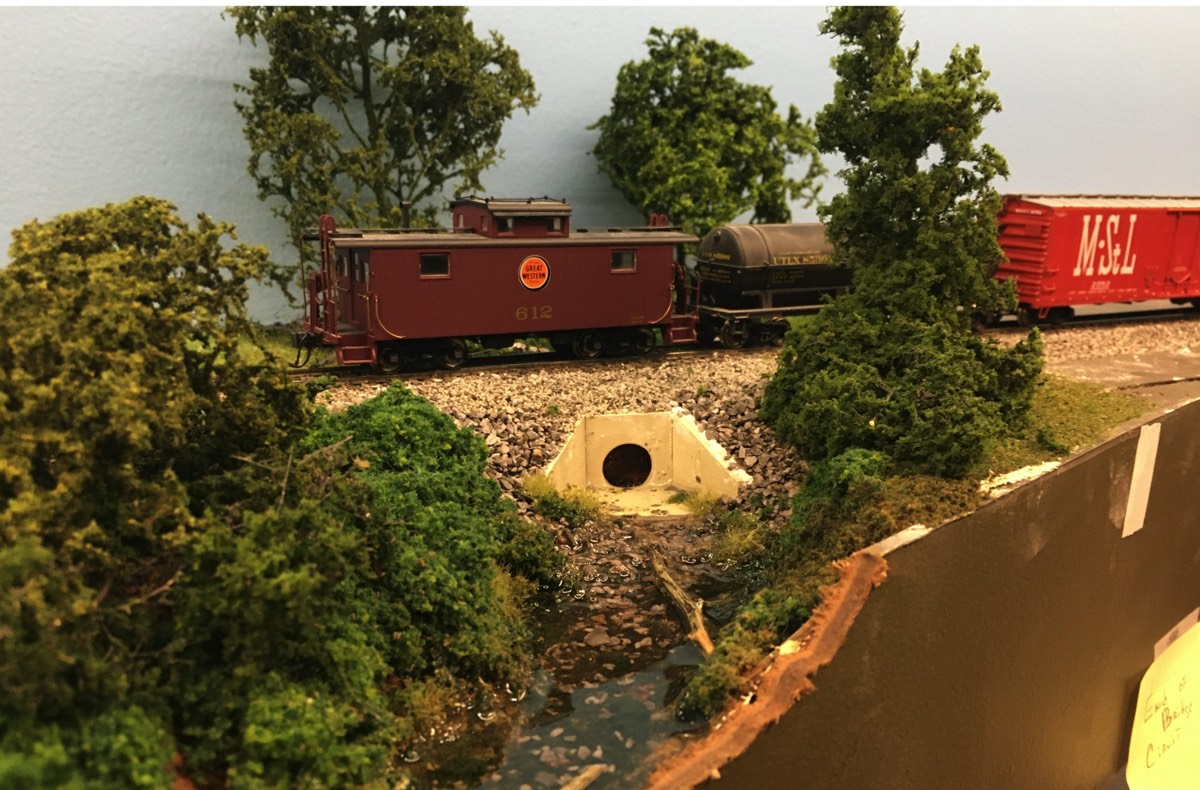
- Timefreight highballing it over Munson Creek
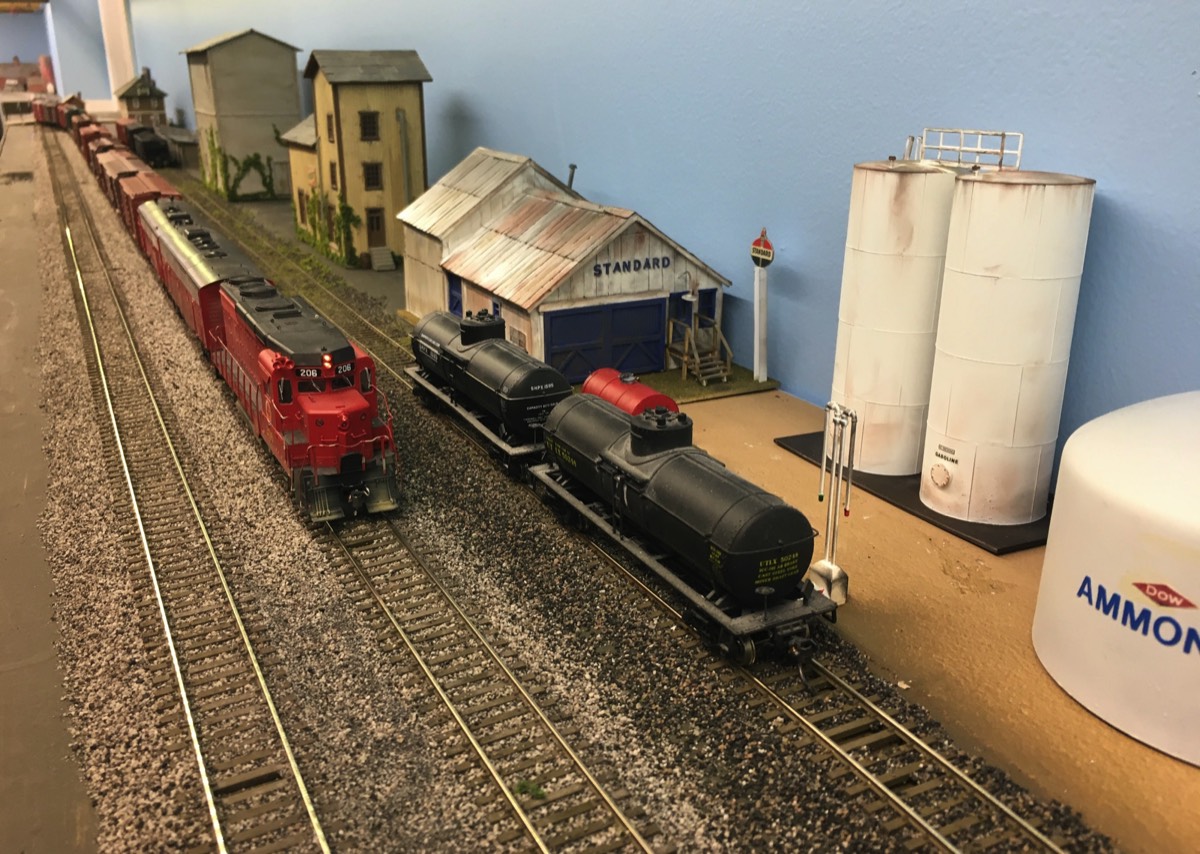
More CNW goodness
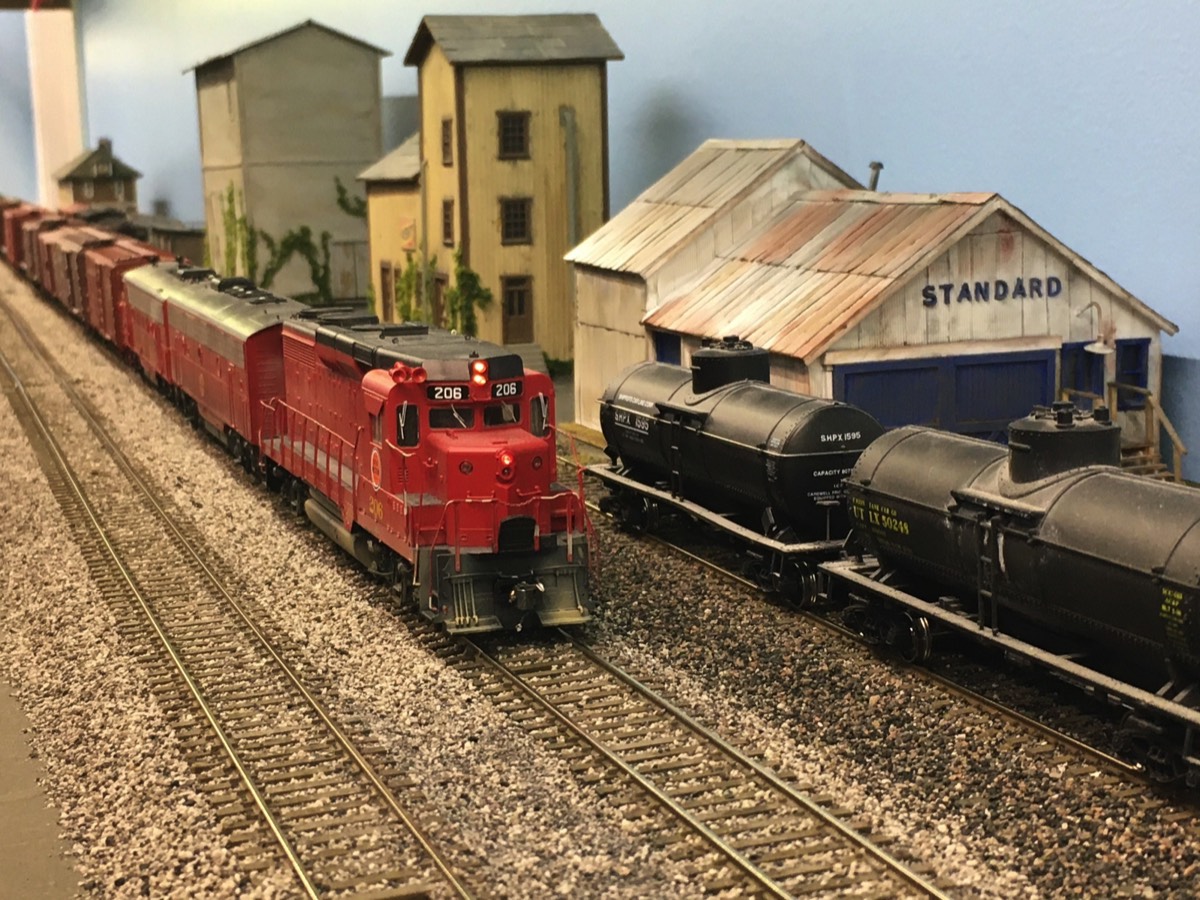
The East Local (The Local to or from Hell) at Solberg
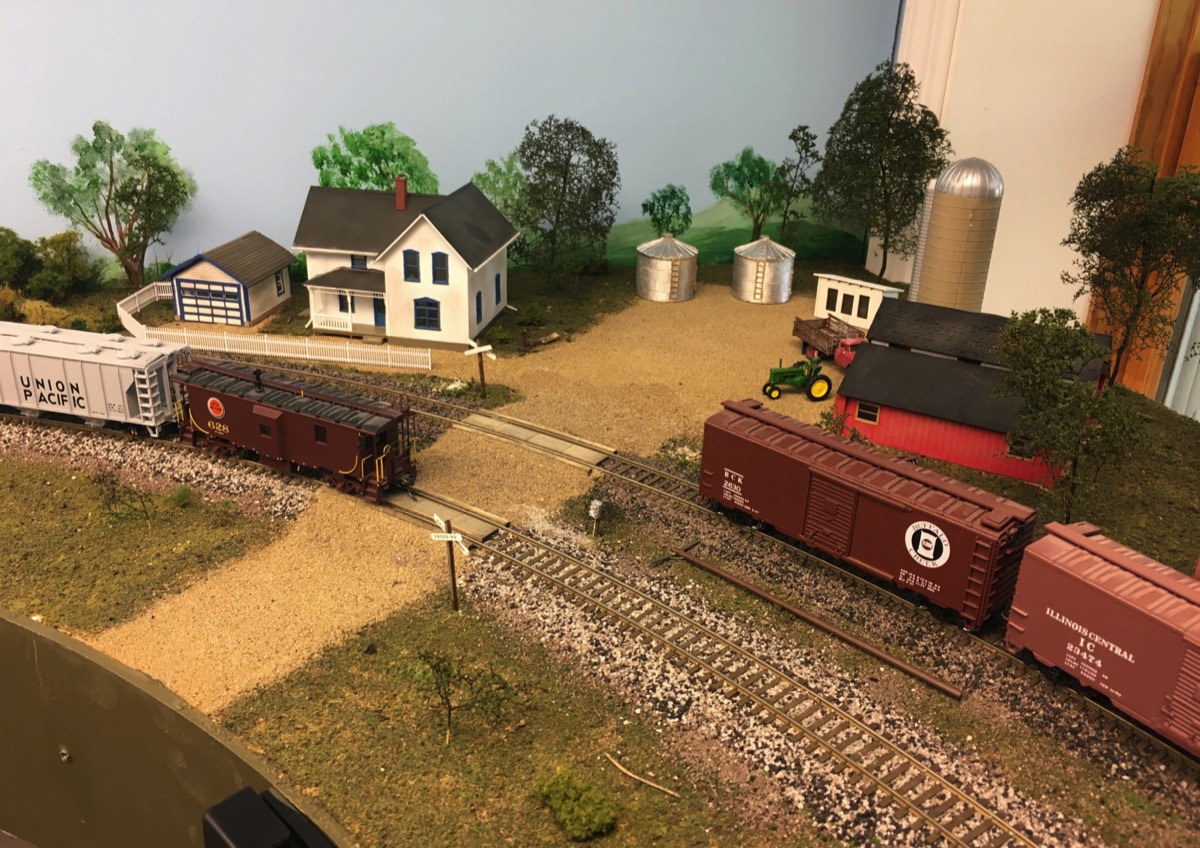
Extra West Timefreight passing the village of Nuel
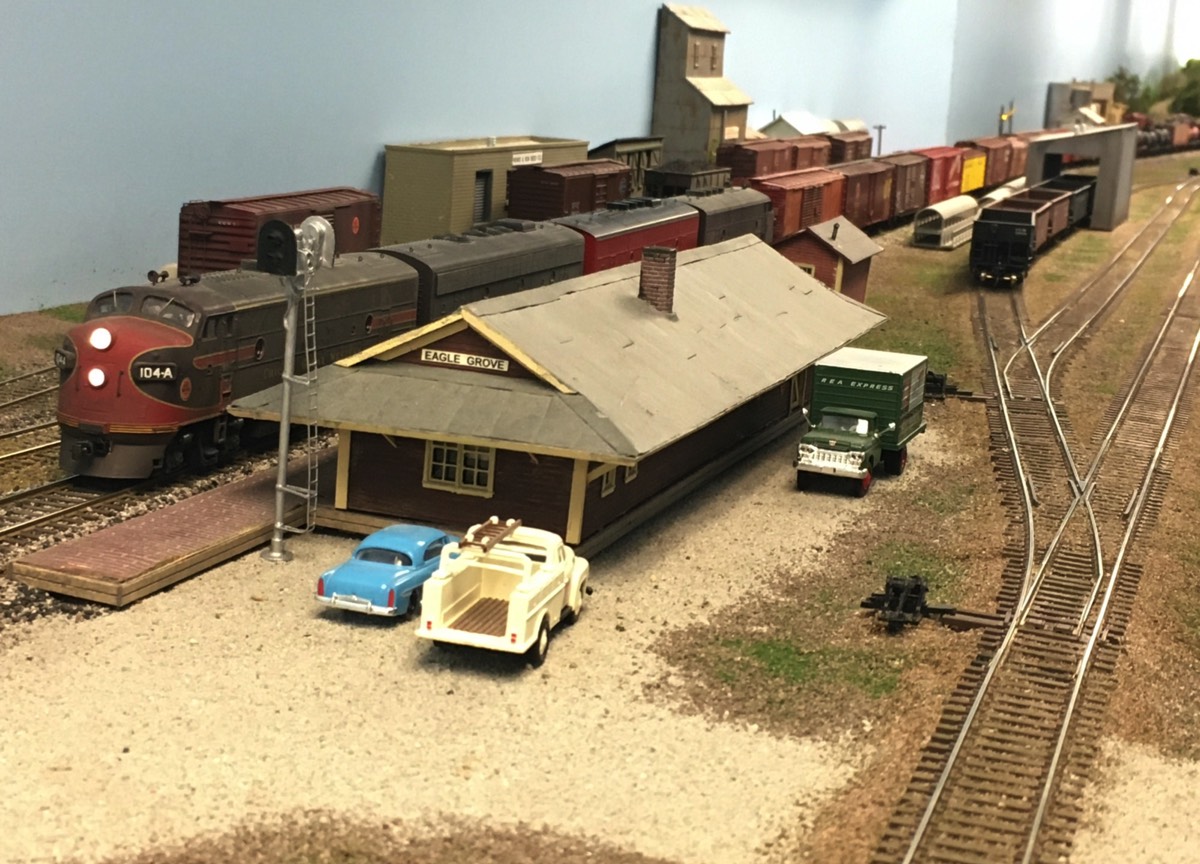
Extra West Timefreight ambling past the thriving city of Eagle Grove
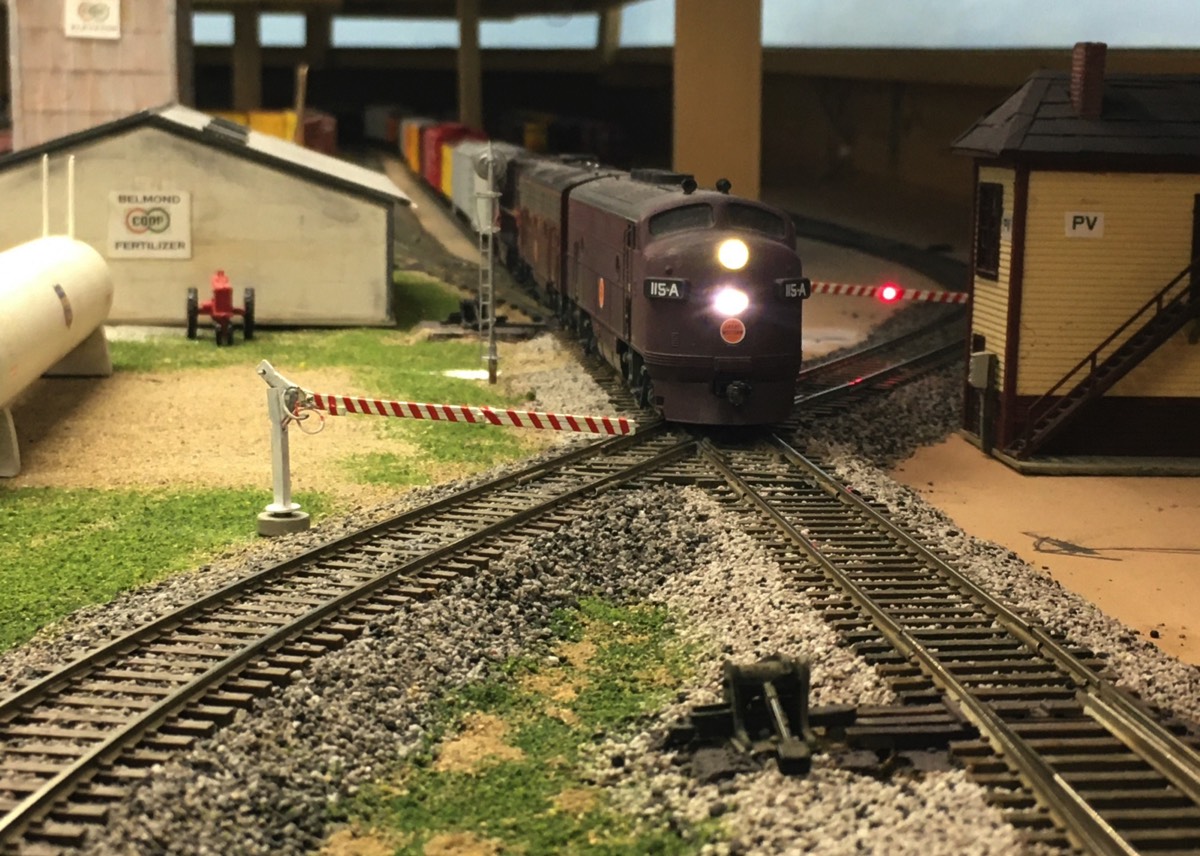
Extra South Local banging over the Rock Island crossover at Belmond
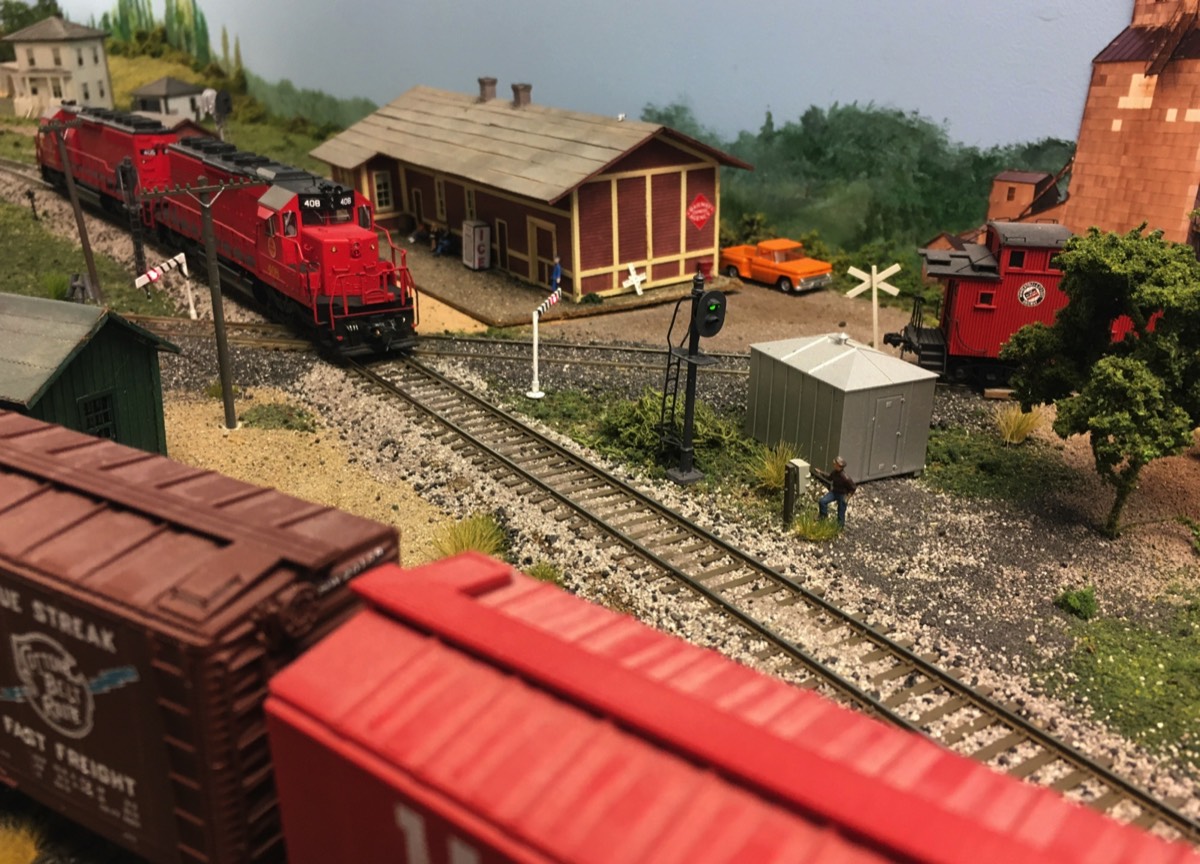
Train #90 rattling over the Minneapolis and St. Louis RR crossover at Moorland. Notice the gated protection.
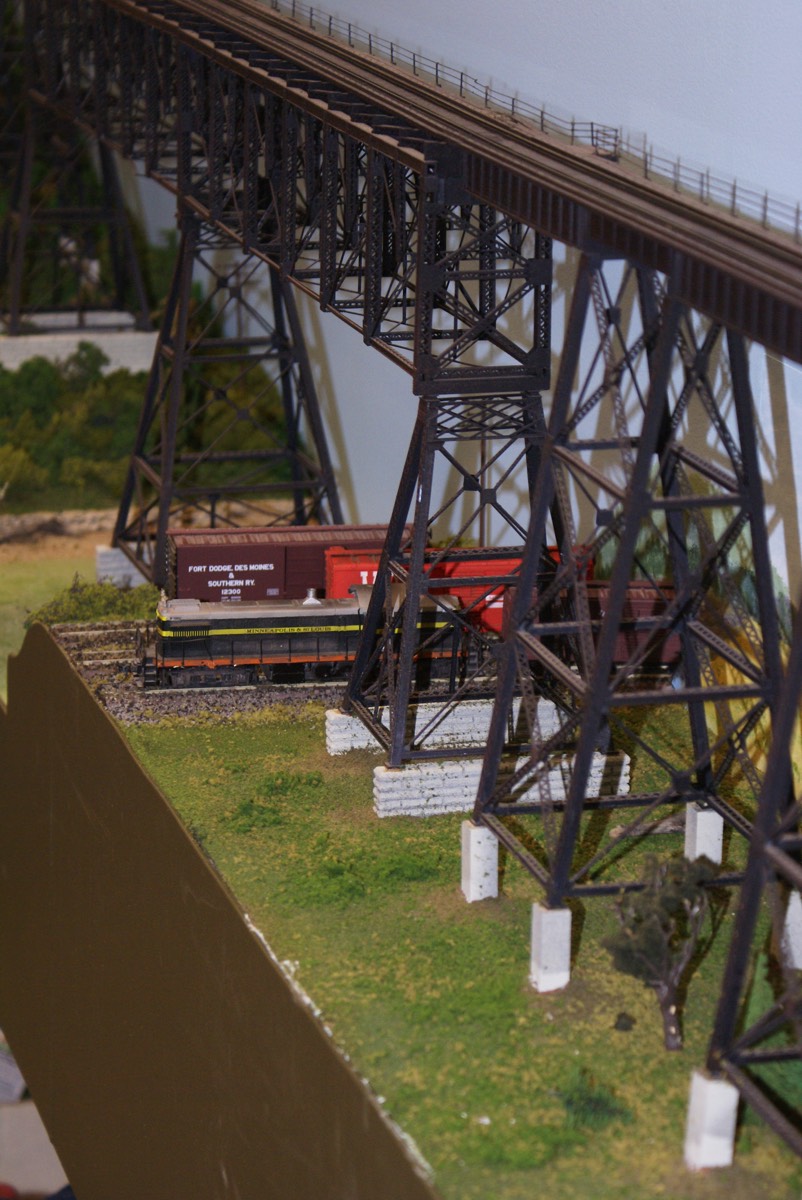
Fort Dodge bridge west end, looking east. The prototype is 103 years old, 140' high at the Des Moines River and it is 52 ' short of 1/2 mile or 2588'. It is presently used daily by several trains. At 16 years of age I used to ride over the bridge on the signal maintainers motor car. Later as a brakeman, a fireman and an engineer.


